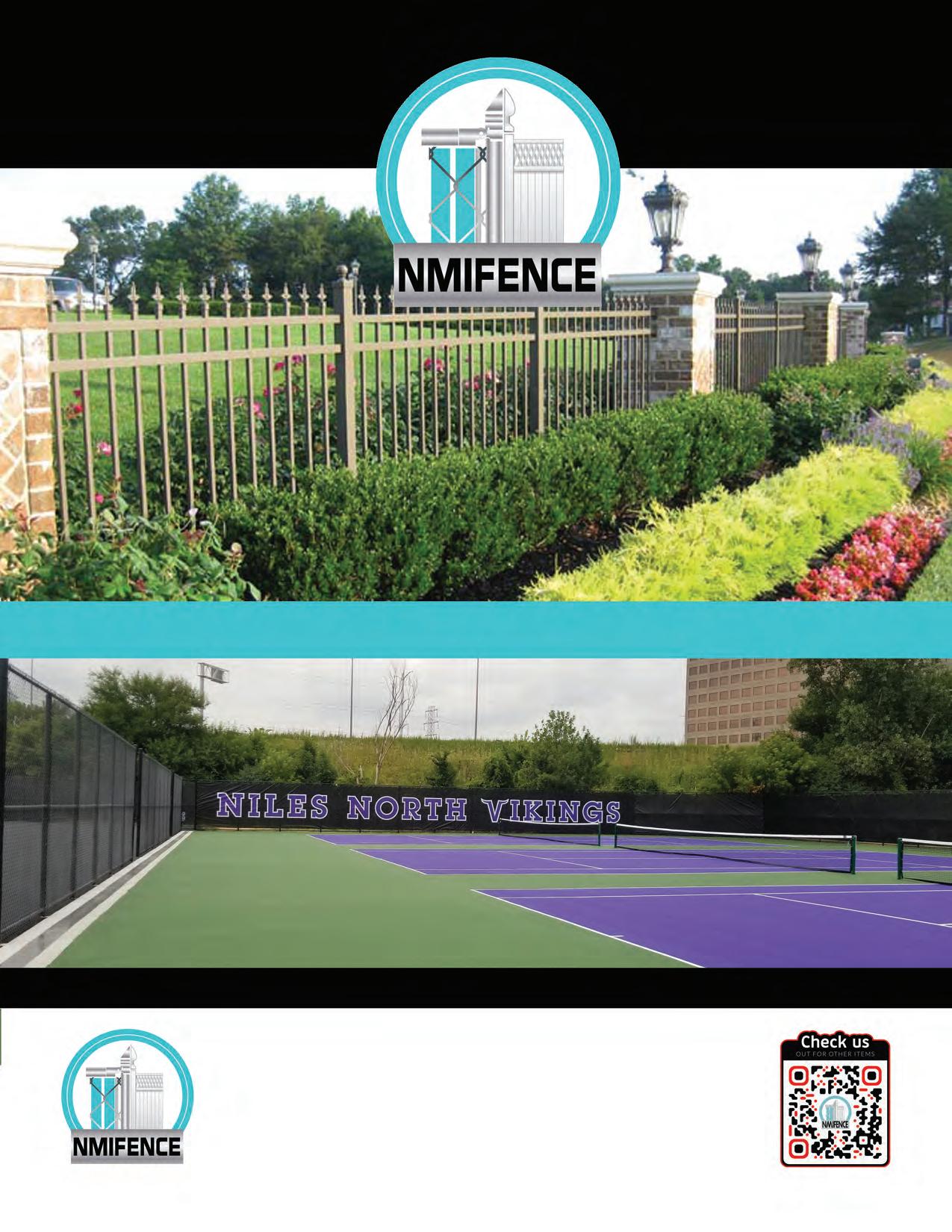

















































































































































WithApril serving as Autism Awareness Month across the country, Carefree Racquet Club wanted to bring players together for a fun day of tennis while doing its part to support the cause of Autism Awareness and give back to the community.
That desire produced the Autism Awareness Charity Zone where dozens of adult tennis players took part in drills and games led by teaching pros. In the Zone format, players rotate courts which gives them the opportunity to play with a multitude of players and coaches.
“I have been coming to Carefree since about 2006, and playing here is always a good time. I love all the ladies here, and love getting involved in any type of charitable events that go on here. They are genuine,” said Tatyana Battaglia. “It was so much

fun. The pros are great, the courts are pristine, and we just have a really good time. I’m having a blast today. I don’t have a chance to play as much tennis as I would like, so I am picky about when I play, but I could not miss an event like this.”
When the on-court portion of the event was complete, participants gathered in the lobby to enjoy a catered lunch as raffle prizes were given out.
The event was put together by Kristen Cassidy, who serves as league director, assistant manager, and parttime teaching pro at Carefree Racquet Club. As a kid attending MacArthur High School in Levittown, she became very active in supporting Autism Awareness fundraisers and events, and organized a tennis charity event during her senior year involving the large ABA program at the school.
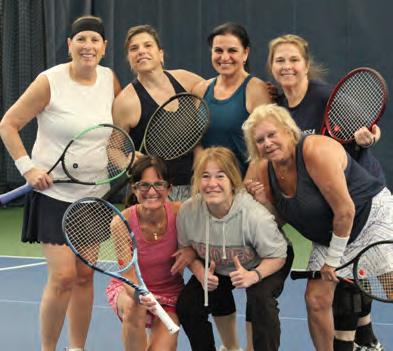
“I found it to be such a positive and impactful event for all involved,”
Cassidy said. “Autism Speaks is a fantastic charity, and we thought it would be a great program to help raise money for in the hopes of continuing to improve the lives of children and adults with autism.”
The event was a success, and in addition to all who participated, there were also many people who were unable to attend but were gracious enough to still donate. Raffle prizes included gift cards to local restaurants, free court time, free lessons and more, and in total, Carefree raised nearly $3,000, all of which was donated to Autism Speaks.
“I was so pleased with the turnout and support from our amazing customers,” Cassidy said. “Everyone was able to have fun and were happy to contribute towards a great cause.”
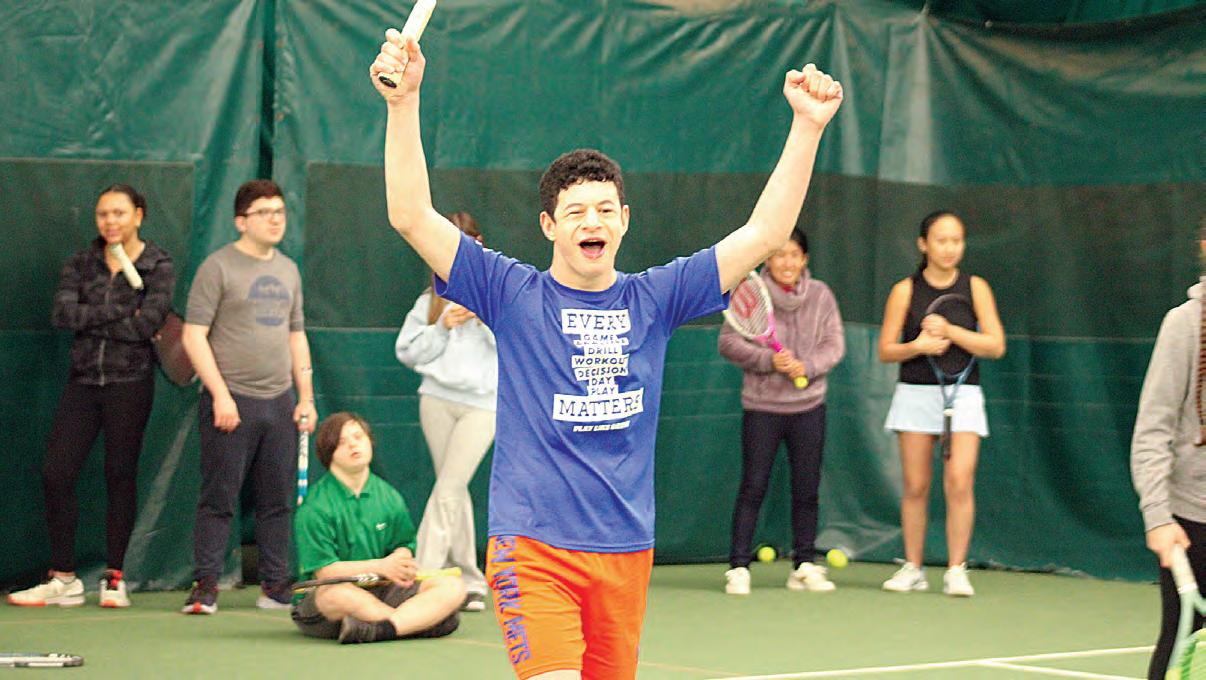
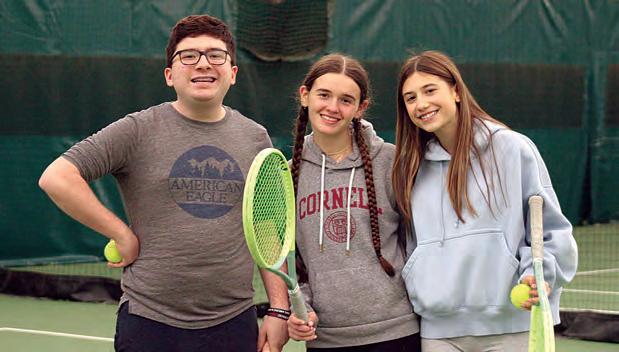
SpecialOlympic athletes along with autistic and other special needs individuals were treated to a free clinic at Bethpage Park Tennis Center. The annual event is run by Long Island Tennis Magazine’s (LITM) event staff, as well as staff from the Special Olympics and Bethpage Park Tennis Center
The athletes were provided a fun and exciting afternoon while surrounded by supportive people. The event staff organized drills and games on court to keep all the kids active and having fun, while helping to teach and, in some cases, introduce tennis to many of these athletes of all ages.

“Working with all of the talented athletes was a great experience and taught me that tennis can be played and picked up by anyone with some instruction,” said Hana Deckman, LITM intern and a senior at Harborfields High School. “Connecting through tennis has always been a great way for meeting new people and making friends!”
Chloe Zigman, another member of the LITM intern team and a senior at Half Hollow Hills East High School, added:
“From working with these talented athletes i noticed they have a lot of passion and excitement to play the

sport. I can see how determined they are to play and it makes me really happy knowing they also love the sport as much as I do and seeing them succeed and be happy puts the biggest smile on my face.”
The Special Olympics athletes competed in King and Queen of the Court towards the end of the clinic, where the players in the programs teamed up with local varsity high school tennis players who are also Long Island Tennis Magazine event staff to compete in doubles play. While the activity was a fun one with tons of laughs, it also brought out the competitive side in everyone, especially the special needs athletes.

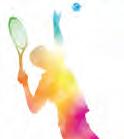
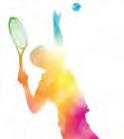
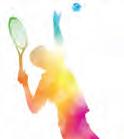




At the end of the on-court portion, players enjoyed pizza courtesy of Mike Pavlides and USTA Eastern Long Island to cap off a fun afternoon.
This clinic was unique in the fact that it consisted of special needs individuals from multiple local organizations and those with a variety of needs.
Throughout the year, Bethpage Park hosts weekly programming for special needs individuals, and events such as these serve as a pathway to added programming, more players and a way to showcase all that these
athletes can do.
“Tennis is a very humbling game so having the reminder that having the opportunity to play and grow is most valuable. I’ve always been amazed at the resilience that special needs athletes display and the joy they derive from playing tennis,” said Steve Kaplan, Founder and Owner of Bethpage Park Tennis Center. “The unification of able and special needs athletes provides that chance for both players to ascend one another.”
Long Island Tennis Magazine looks forward to continuing to partner with

local organizations and groups to maintain its objective of providing tennis opportunities to all.
“We were thrilled to once again team up with Steve Kaplan to host this free clinic and share the love of tennis with these deserving individuals,” said David Sickmen, Publisher of Long Island Tennis Magazine. “It’s our goal to continue to grow the game of tennis, and that means bringing the sport to as many people as possible. We have seen the progress in the level of these athletes and are excited to host more events like this in the future.” Inspired by the serene landscapes of Faiyum, Egypt, where desert sands meet the sky. Limited edition collection. www.inphormnyc.com



May is National Tennis Month, and our adult league players have its fair share of participation to celebrate the sport! While the 40+ Mixed, 55+ Mixed, and Tri-Level leagues are coming to a close with these Sectionals taking place at the end of May and June, our Men’s and Women’s Leagues are ready for launch which always brings a feeling of summer to our players!
To highlight our early 2025 leagues, the 18 & Over Mixed Doubles Sectional will be held the last weekend in May in Greenburgh, New York.
Congratulations to the following teams:
• 18+ Mixed 6.0: Lynbrook - Donna Healy
• 18+ Mixed 7.0: Deer Park – Suresh Patel and Kevin Bunting
• 18+ Mixed 8.0: Christopher Morley - Ahmad Amin and Courtney Sokol
• 18+ Mixed 9.0 : Point Set – Danny Burgess, Jr.
Registration links and hotel information can be found on the Adult League Championship website. If you need assistance or have questions regarding the tournament, feel free to reach out. As I mentioned, all of our 2025 Tri-Level leagues are coming to a close, but a clear winner is yet to be determined. In the 55+ 7.0 Mixed League, Jennifer Mao and Dawn Shosberg are trying to make a repeat of last year by making it all
By Becky Bellino
the way to Nationals. Let’s see how the team does for 2025. If their performance at the Invitational is any indication (they earned themselves 3rd place overall!), expectations are high! It is a tight race all across the board with our current leagues, and the winners will be announced in our next article.
And now the true busy season has begun! As mentioned, the 18+ and 40+ men’s and women’s teams kicked off in late April and early May, while the 55+ and 65+ leagues begin in June. With 189 teams participating in various leagues and almost 900 matches scheduled across the Island, it is amazing to see the representation that Long Island has.
Thank you all for your efforts and participation as tennis continues to grow each year. I hope for a fun-filled, action packed season with you all!
Looking forward to seeing everyone on the courts!



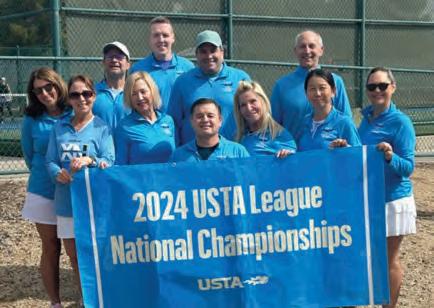


thic T




5tonsT - Crushed basalt. 14-1 Toogether with the turf b is about 1 inch - Caliclay Synthe Tuurf 0 .4 inche
The turf is for stability and moist
tention
base es ture

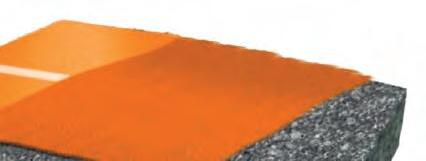



c -

c ted s oil with s e al p a o m re t e or 9 5 % oncre sp h a l t, c A


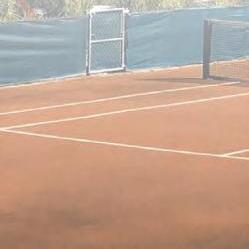









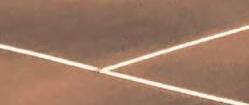



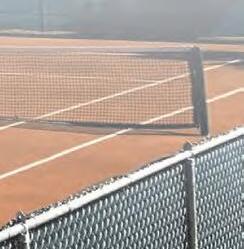

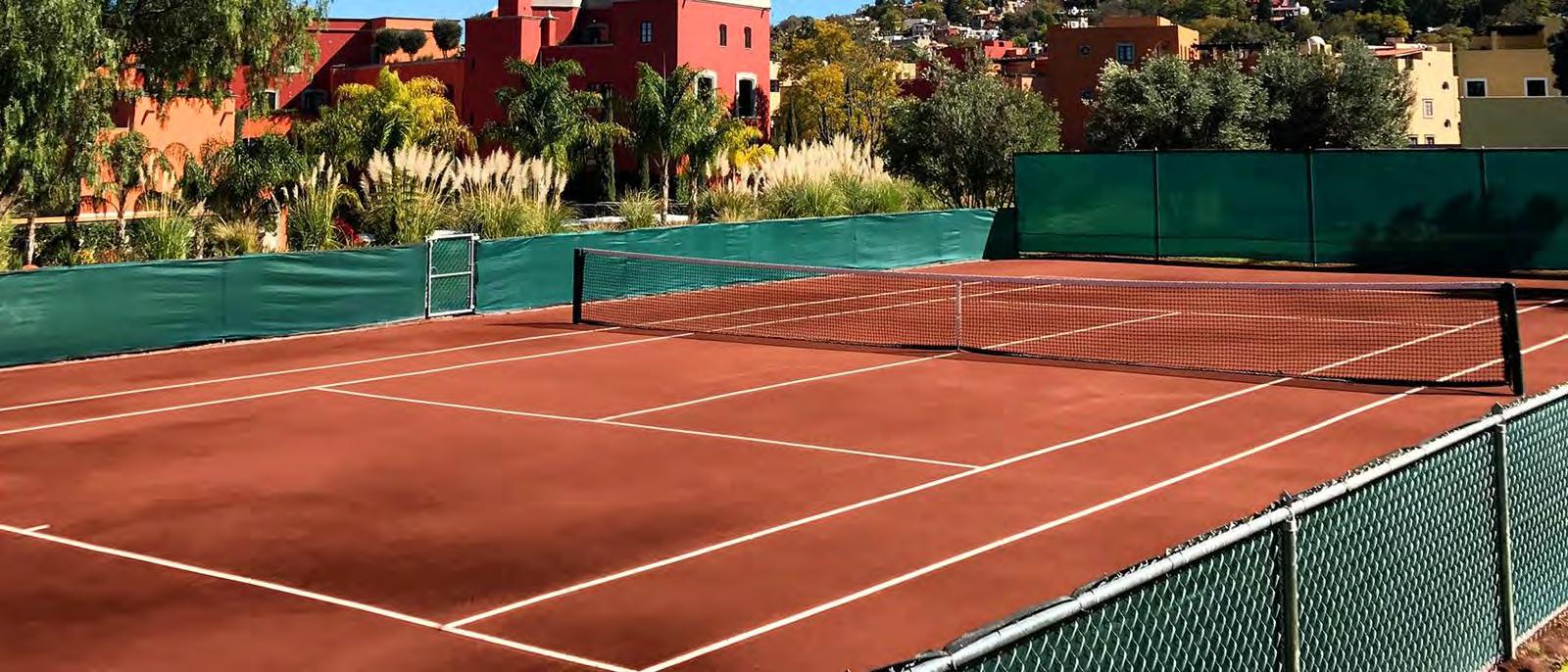
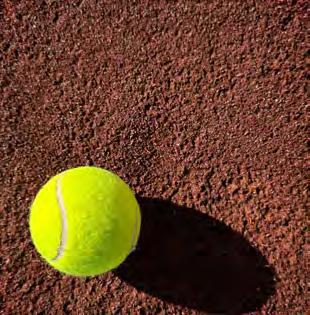


Navigating the recruitment process for a high school athlete seeking to continue their career at the next level is a daunting task. Even for the best of the best and a highly sought-after recruit, the stress can be overwhelming, as the decision on where the next chapter in your life will take place is an immense one.
That was the case for Claire An, a five-star, blue chip senior recruit who grew up in New Jersey and trained at CourtSense Tennis Training Center before moving to Florida to train at the Evert Tennis Academy. And despite being one of the best players in the country who had countless offers from the top tennis programs and elite academic institutions across the country, it helped to have people in her corner guiding her in that process.
An spent her high school years attending the Dwight Global Online School headquartered in New York City, which allowed her to train in Florida while still receiving a top education. And it was through the expertise and resources of Dwight that she was able to manage her own recruitment process, and not let it affect her education, training or match readiness.
“Dwight Global was incredibly supportive throughout my college recruitment process,” An said. “I was assigned to college counselors who were very knowledgeable and experienced with the unique demands of student-athletes. We met regularly and worked through specific tasks to make sure I stayed on track with all of my deadlines.
By Brian Coleman
They truly understood what it meant to balance school, training and recruitment, and helped me navigate everything–from building a strong academic profile to scheduling visits and calls with coaches–while keeping up with my coursework. Their support and flexibility made the entire process much smoother and a lot less stressful.”
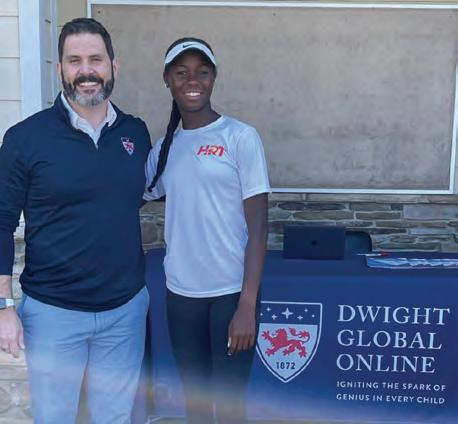
That proved crucial for An, who will be headed to Duke University later this fall to begin the next stage of both her tennis and academic careers. The assistance in the college recruitment process is just one of the many areas in which the team at Dwight Global helps all of its students, but particularly those pursuing careers in tennis, of which it has many.
“A motto we live by at Dwight Global for our students is ‘Your dreams have no limits, why should your school?’. This is true for all of our students, but especially so for our junior tennis players, as we’ve given them an environment where they can thrive,” said Louisa Childs, Head of School at Dwight Global. “We are incredibly proud of these players and what they have been able to accomplish academically and on the tennis court. These students are ready to lead on university tennis teams and in life.”

The Dwight School has been serving its students for more than 150 years, and is one of New York City’s oldest independent schools. During that time, it has used all of its available resources to craft a personalized journey for every student based on individual interests and passions, and has always remained at the forefront of innovation to adapt to changing times and ensure it continues to serve its students' journeys.
Dwight Global Online School represents the latest Dwight innovation. Through a combination of live video conferences that bring students together with instructors and each other, and on-demand resources that students can access any time, to personal Oxford/Cambridge-model tutorial sessions, Dwight Global extends the mission of developing global leaders to students everywhere in the world. And it is the Online
School that has cultivated the perfect environment for top junior tennis players, as An explains:
“The school offers a flexible schedule that allows me to maintain a rigorous course load without sacrificing valuable time on court. As a high-level junior tennis player training and traveling require a significant time commitment, and Dwight truly understands and accommodates that lifestyle.”
She continued:
“What I especially appreciate is the combination of asynchronous and synchronous classes–being able to work independently when needed, while still engaging in live discussions with teachers and classmates. That balance has helped me stay connected, supported and on track academically, no matter where I am. Thanks to Dwight, I’ve been able to pursue my tennis goals at a high level while receiving an
An is just one of the many top tennis players benefitting from Dwight’s flexibility and experience, and the school boasts a loaded resume of players, including last winter’s NCAA
Michael
A junior at Columbia, Zheng won the national championship last season, and previously reached the 2022 Wimbledon Boys’ Singles final, and gives a lot of credit to his education at Dwight for his success at the collegiate level.

“He has mentioned to us that after Dwight Global, he found he was well equipped to manage the demands of a collegiate tennis schedule and Columbia academics,” said Childs. “We hear stories like this again and again.”
The fact that Dwight Global is so in sync with its tennis playing students should come as no surprise, as the school’s Vice Chancellor, Blake Spahn, was the Captain of the 1994 Ivy League Champion Columbia Men’s Tennis
continued on page 8












Team, who went undefeated with him leading the way that season. In recent years, Spahn continued Dwight Global’s innovation and created the Travel Tennis Team Initiative, which provides opportunities for its students to play tournaments all over the world under the watchful eye of top coaches and chaperones.
“Dwight Global players benefit by experiencing new cultures, as well as gaining exposure to international competition while training, studying and competing together,” added Childs. “So far, the team has travelled to ITF tournaments in Costa Rica, Uruguay, Barbados and Guadalupe, and we are planning a trip to the U.S. Virgin Islands this spring. With so many top players and the flexibility provided by Dwight Global, our Traveling Tennis Team provides an excellent opportunity to create the community and camaraderie of a tennis team for students in middle school and high school.”
This new initiative is an indicator of Dwight’s commitment to its tennis
players, not in just providing the necessary environment to thrive on and off the court, but also now facilitating tournament travel and providing opportunities to compete professionally, while also creating the type of team atmosphere they will experience at the next level in college.
The list of players who have benefitted from attending Dwight goes well beyond An and Zheng, and includes players such as Cooper Williams (Harvard), Pearlie Zhang (Princeton) and Mark Krupkin (Stanford), among countless others.
The needs that exist for top-level junior tennis players are unique, and in order for them to have the necessary resources to succeed, it’s important to find the ideal environment for them to thrive. Dwight Global has been at that forefront and with its consistent desire to remain innovative in meeting those needs, it will allow junior tennis players to be the best they can be on the court while preparing them for life off the court.
“My experience at Dwight has definitely prepared me for college life, especially as a student-athlete heading to Duke,” added An. “Managing a demanding academic schedule alongside intense tennis training and travel has taught me how to be independent, selfmotivated and organized. Dwight teachers really care about your success and are genuinely invested in helping you thrive both academically and athletically.
I remember times when I was traveling for weeks at a time and my Dean would regularly check in with me–not just to see how I was doing academically, but to make sure I wasn’t overwhelmed or needed any additional help. That kind of support helped ease a lot of the stress that comes with balancing school and tennis, and it made me feel like I wasn’t navigating everything alone.”
The motto of Dwight School is “Your dreams have no limits, why should your school?”, and the team there works each and every day to make that a reality for its aspiring tennis players.




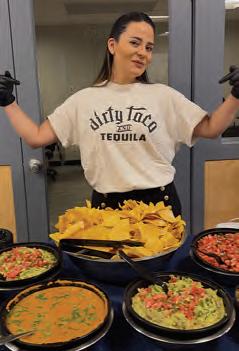


Sid Jacobson Jewish Community Center (SJJCC) held a special fundraiser at SPORTIME Syosset, New Leaders’ Tennis, Tacos, and Tequila to help raise money for its organization.
The event was held in conjunction with Long Island Tennis Magazine, who modeled the event after its successful Courts & Cocktails event series.
SJJCC is the only full-service JCC on Long Island’s North Shore, providing a full range of cuttingedge recreational, health, fitness, educational, cultural arts and social
services programs to East Hills and the surrounding community.
“Fundraising events like Sid Jacobson JCC’s Tennis, Tacos and Tequila play a crucial role in making this mission possible,” said Ashley Steck, Development Associate of Special Events for Sid Jacobson JCC. “These events allow us to generate the financial support needed to sustain and expand our programs, ensuring we can continue to offer essential resources to those in need.
Whether it’s providing scholarships for families, funding specialized
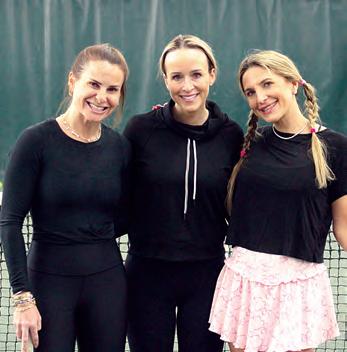
wellness programs or supporting our social service initiatives, every dollar raised helps us create meaningful impact.
Events like these also serve as an opportunity to engage with our community, build relationships and celebrate the generosity of our supporters and donors.”
That generosity was on display at the event as a sold-out crowd of young adults of varying tennis levels came out to make donations to the organization, and participate in drills, match play and other games.

In the lobby, Dirty Taco catered the evening with a delicious Mexican food spread and there was an open bar set up throughout the evening serving up all sorts of drinks.“Many attendees have shared how much they enjoyed the event, whether it was the energy of the evening on-court, the catering organized by Dirty Taco & Tequila or the chance to connect with fellow supporters of our mission,” Steck said. “We’ve heard wonderful remarks about the event’s organization and the overall experience, which reinforces the importance of these gatherings in
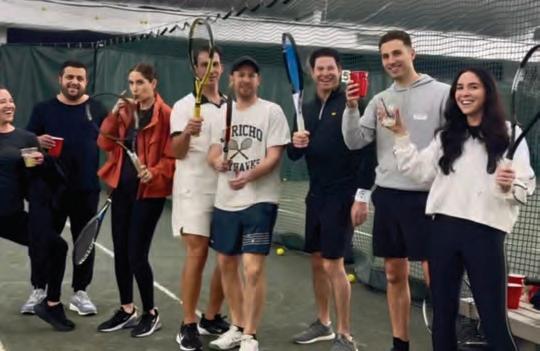
bringing our community together. We successfully raised a lot of money to support our programs. This incredible generosity ensures that we can continue to provide essential services and make a lasting impact on the lives of those who rely on us.”
David Sickmen, Publisher of Long Island Tennis Magazine, added:
“Our Courts & Cocktails event series has become a staple in the local tennis community and this event was a spinoff of that. We love helping to bring the community together for fun and unique Saturday night experiences while

also raising money for worthy causes. We are appreciative of our partnership with the JCC and love all that they do and we wanted to help make sure the event was done professionally and that everyone had a great time. On this night, with a sold-out event, it was a perfect time for couples and friends to spend time together on and off the court, and also meet new people; the money raised makes everything worth it. We are looking forward to operating many more events like this and continue to partner with great organizations like the SJJCC.”

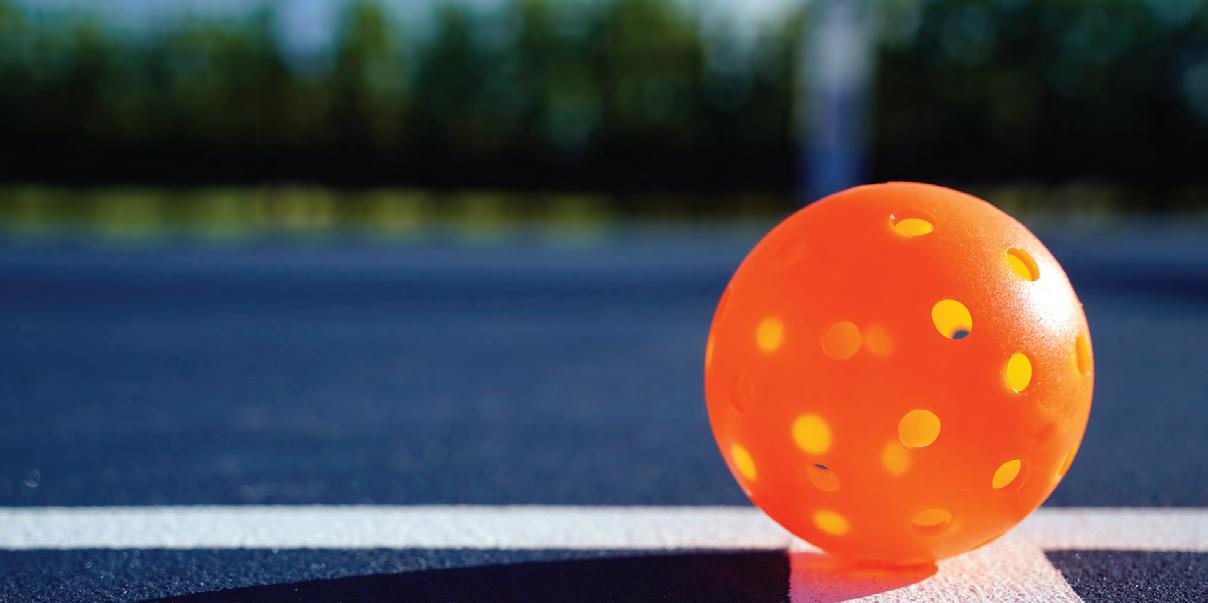
Fourth Annual Easter Pickleball Classic



Overthe holiday break, Long Island Tennis Magazine hosted its second pickleball tournament of its 2025 Event Series. Players from all over the Island converged at SPORTIME Kings Park to participate in the Easter Pickleball Classic presented by Orlin & Cohen Orthopedic Group.
Teams competed against one another in round-robin play across four different divisions with the results of those matches
determining who advanced to the knockout rounds.
In the Men’s Doubles 3.5 – 4.0 division, James Kavanaugh & Dan Stolzenburg used their experience playing together in the past to reign supreme. The pairing defeated Tony Romano & Alberto Carrero 11-5 to win the Gold Medal.
“We play a lot together so we have good chemistry,” said Kavanaugh. “As we went through the matches we were able to see what our opponents didn’t do well, and then tried to capitalize on that.”
Stolzenburg was complimentary about the event overall:
“It was a really fun event on court, and the pizza, drinks and people combined to make it a festive atmosphere off the court as well.”
Lori McBride & Joenna Greenberg employed a simple yet effective strategy to help them win the Gold Medal in the Women’s Doubles 3.5 – 4.0 division.

Women’s Doubles 4.0 – 4.5 Gold Medal Winners
Emilie Katz & Kelly Cobbs
“The strategy was to make less mistakes than the other team, and trust your partner,” Greenberg said.
That indeed worked as the duo won 11-3 over Rose Gardner & Kathie Glynn to win the title.
“Just hanging out with our friends and having fun,” McBride said about how enjoyable the night was. “And winning, obviously.”
In the Men’s Doubles 4.0 – 4.5 division, Miguel Cobbs & Luis Ludena defeated Andrew Lacorte & Carlos Quinonez 13-11 in a thrilling final to clinch the Gold Medal.
“That final was tough,” said Ludena. “It was a tight match with a lot of long points.”
Cobbs added:
“That last match was a battle. It feels good, we really didn’t want to lose today. I really like the players and the vibe at the Long Island Tennis Magazine pickleball tournaments. It’s an awesome time.”
Emilie Katz & Kelly Cobbs paired up for the first time in a tournament setting, and were able to rapidly find their footing together. The duo defeated Samantha Cuomo & Jackie Kramer 11-3 in the championship match to win the Gold Medal in the Women’s Doubles 4.0 – 4.5 division.
“It was a lot of fun. It was our first time playing together and I thought we had some great matches,” Katz said.
“I’m glad Emilie asked me to play; we had a lot of fun playing together,” said Cobbs. “The main thing was we wanted to communicate well, and I thought we did a better job of that as the night went on. This tournament was great, it moved along nicely and you are able to get a lot of matches in.”
The next pickleball tournament in our Event Series is the June Pickleball Challenge presented by Orlin & Cohen Orthopedic Group which is set for Saturday, June 14 at SPORTIME Hempstead Lake. To register or to find more information, visit LITennisMag.com/Events/ June Pickleball.
Men’s Doubles 3.5 – 4.0
GOLD: James Kavanaugh & Dan Stolzenburg
SILVER: Tony Romano & Alberto Carrero
BRONZE: Peter Lampione & Joe Paek
Men’s Doubles 4.0 – 4.5
GOLD: Miguel Cobbs & Luis Ludena
SILVER: Andrew Lacorte & Carlos Quinonez
BRONZE: Thomas Walter & Brandon Weinstein
Women’s Doubles 3.5 – 4.0
GOLD: Lori McBride & Joenna Greenberg
SILVER: Rose Gardner & Kathie Glynn
BRONZE: Shelly Eckstein & Sandra Alestra
Women’s Doubles 4.0 – 4.5
GOLD: Emilie Katz & Kelly Cobbs
SILVER: Samantha Cuomo & Jackie Kramer
BRONZE: Diann Starcke & Renee
“I would like to thank our title sponsor Orlin & Cohen Orthopedic Group for their amazing support in helping us put on a professionally-run and successful event. We made sure all participants played a lot, that the tournament ran on time and that we had food, drinks and snacks. available to players during the tournament,” said Tournament Director David Sickmen. “I also
Lemmerman
want to thank SPORTIME Kings Park for hosting, and my cotournament director Michelle Stoerback for all of her hard work in tournament coordination. We’re excited to continue our partnership with Orlin & Cohen Orthopedic Group, and grow our presence in the pickleball community.”












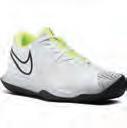




in the kitchen
continued from page 13
LongIsland has a new dedicated pickleball facility as SPORTIME Westbury officially opened its doors earlier this spring.
This premier facility is designed for both competitive and social play, and features 13 dedicated, climatecontrolled courts, designed to accommodate play and instruction for all levels.
To elevate the playing experience, Sportime Pickleball Westbury offers courtside lounges, changing rooms with showers, a pro shop, a grab-andgo café, and a party room with court viewing. Through exclusive Platinum Partnerships with Joola, Selkirk, and Diadem, players will have access to cutting-edge gear and exclusive events designed to enhance play and educate guests on the latest pickleball equipment and technology.
“Westbury is very special to the SPORTIME family because so much care was taken to create a true pickleball with the finest quality on Long Island,” said Lisa Scotti, General
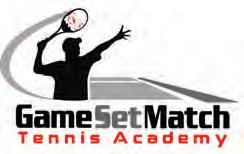


Manager of SPORTIME Westbury.
“Our sister facility, Port Washington, led the way for pickleball at SPORTIME, but Westbury is the premier club as we offer pickleball exclusively.”
SPORTIME Westbury had its official grand opening with an Open House event, welcoming in players for a day
Pick ANY 20 days from our full tennis summer camp schedule—attend full-day or half-day sessions at your convenience! Discounts Available Until March 30th
Island Health & Racquet Setauket
To register, text Tito Perez at (631) 682-4079

of open plays for all levels, which culminated with a open play for 4.0 players which filled the facility.
“We sold out for each session and each level the whole day,” Scotti added. “The event and day were greater than we could have imagined.”
Featuring 13 state-of-the art pickleball courts, the new facility demonstrates SPORTIME’s commitment to growing the sport, and continuing to elevate the offerings for its customers.
“Westbury pickleball is offering programming that differs from other clubs. We are focused on serving our players in all aspects of the game, from court time and instruction, to equipment and special events,” said Scotti. “We have become quite popular with special events because of the open floor layout and the amenities we offer for small and large events. We are setting the precedent for the real pickleball experience on Long Island, which is the social aspect of the game. Creating a social space with fun competition and the pickleball culture is our goal.”
By Rob Polishook
Goalsetting is a great tool for aspiring pickleball players to implement during their development. Goals help the player stay committed, determined and focused. They should be challenging, individualized, and motivated by intrinsic factors that are meaningful to the player. Additionally, goals should also be specific and timebound, so the player knows exactly what they are trying to accomplish and by when. I suggest writing down goals and keeping them in a visible place and/or sharing them with others. Doing so will help the player keep their goals at the forefront of their mind.
There are two types of goals: outcome goals and process goals. Both important but different. It’s imperative to understand the distinction between the two types. Outcome goals focus solely on the end result, while process goals focus on the steps a player must take to give them the best chance to achieve their outcome goal. For example, an outcome goal might be to win a tournament, while a process goal could be to improve serving accuracy, third shot drops, or stay calm and centered between points. Outcome goals, which are result based, are out of a player's control. It should be stated up front, that we all want to win, but wanting to win (outcome goal) and doing the things that are necessary to win (process goals) are two different things. Focus needs to be on what is necessary to give yourself the best chance to win, not the end result of winning itself. This is where process goals come into play. They focus on specific areas of the game that the player can practice and can control such as how they prepare, how they drill, how they warm up, what shots they choose, what strategy they use, and how they react to
situations in games.
An important aspect of goal setting is objectively determining where a player is in relation to their goals, essentially knowing “where they are.” This realistic perspective will help the player understand “what they need to do” and the appropriate process goals necessary to practice to give them the best chance to achieve their goals. The most common mistake players make is focusing solely on outcome goals, such as winning. This can result in subpar, poor, and frustrated outcomes because their focus is split between what they want to happen in the future and what is actually happening in the moment, their focus is divided.
Instead of focusing on winning, which is something that cannot be controlled, a player needs to focus on playing each shot with a clear intention, in the moment, during the point. An example of this could be hitting deep returns to the middle and moving to the kitchen. Hitting shots with intention helps players maintain their focus on the process, stay fully engaged in the moment, and control what they can control.
It is recommended that players set an outcome goal and then determine the process goals that will best help them reach the outcomes. An outcome goal is like standing at the bottom of a staircase and only staring at the top step, this can be overwhelming, wondering how to get to the top. However, a process goal involves taking one step at a time. By breaking a larger goal into smaller, achievable steps, you can make progress and achieve your ultimate goal. Remember: to reach the top, you must start with the first step, followed by the next step. That’s the process!
Outcome goals are static whereas process goals are flexible and can be adapted, adjusted and modified
at any time.
For example, let’s consider this situation of outcome and process goals: I, the author (Rob Polishook,) once lost in a tournament. Clearly, the outcome goal of winning was not met! However, upon reflection, I identified a key weakness: my inconsistency in hitting resets from the transition zone and the kitchen. Since then, I have been dedicating 20 minutes per practice to practicing reset volleys from different court locations. Think about it, this type of intentional practice is no different than a basketball player practicing their jump shots from different locations on the court.
As Dr. Alan Goldberg, a noted mental training coach, says, "Once the competition starts, the outcome goal should be parked at the gate and the player should focus on the moment and the process of what they need to accomplish." Research has confirmed that achieving process goals not only enhances performance but also reduces anxiety and builds confidence. This is because process goals are within the pickleball player’s control.
Here are three examples of process-driven goals in Pickleball:
• Incorporate specific strength training or movement exercises three times per week into your workout routine to increase balance and stamina.
• Practice hitting ten ser ves to each of the three different targets (down the T, body, and out wide) on each side of the court three times per week.
• Practice hitting 10 reset volleys from the kitchen five times per week. Then, move back to the transition zone and repeat the process.
Tennisclubs continuously seek ways to streamline operations, elevate customer experience, and increase revenue. Thanks to BLUME software, they can now achieve these goals. BLUME was conceptualized by Gowri Guruswamy and brought to fruition by her dedicated team.
Initially launched at Robbie Wagner’s Tournament Training Center, it is now utilized by numerous clubs across the US. Its versatility allows it to serve diverse customer bases, including universities, schools, country clubs, and private clubs.
BLUME assists clubs in installing software according to their needs and provides customized solutions based on their specific requirements.
BLUME’s Core features include: Reservations Made Easy
Color-coded bookings, pop-ups, and icons makes it easy to schedule and manage reservations
Program Management
Enables administrators to create and manage a variety of programs such as lessons, clinics, tournaments, and social events.
Membership Management
Empowers clubs to efficiently manage their memberships and drive long-term membership growth and retention.
Mobile Apps
Dedicated mobile apps to allow players and staff to access program information and make reservations on the go.
Staff Management
Create and manage staff schedules and generate digital timesheets for payroll that summarize staff hours worked over a specified period.
Customization
Flexibility to customize to meet your club requirements.

Streamlines the process of creating and sending invoices
Payment Processing
Integrations with payment gateways to facilitate secure online payments
Reporting & Analytics
Provides valuable insights into club performance, member engagement, and financial metrics.
Team BLUME is committed to closely collaborating with clubs and listening to their feedback to continuously enhance and evolve as the leading club management software.
Hear what clubs who have used BLUME have had to say:
“We, at Carefree Racquet Club, have found the program provided by BLUME to be exceptional, meeting all of our needs seamlessly. The support team is truly remarkable, consistently addressing any issues that arise with remarkable speed and efficiency. Additionally, the level of customization available has allowed us to tailor the program precisely to our requirements, further enhancing its effectiveness for our business. We couldn’t be more

pleased with our experience.” – Kathy Miller, General Manager, Carefree Racquet Club
“When I first arrived in my new position, the first and most important decision was choosing a court booking/management system for the new state of the art Milstein Family Tennis Center. Columbia University requires an in depth analysis of multiple vendors before any decision is made. After going through the process with the administration, it became apparent that Blume was the software system for us. Blume customized its software to fit our specific needs and solved for all of our unique requirements. The combination of value, efficiency and customer service is amazing. I highly encourage anyone looking for a great court booking/management system to consider Blume. Please do not hesitate to reach out to me directly if you have any questions.” –Keith Kambourian, Director of Tennis, Columbia University
To learn more about BLUME and how your club or facility can benefit from it, visit BlumeSoftware.com, call (516) 806-9383 or e-mail info@creosystems.com.
By Brian Coleman
‘Back on court, thanks Jack Draper’
That’s what the caption read on Jannik Sinner’s Instagram post back in April as the Italian shared a picture of himself during a practice session as he prepared to make his return to match play.
His return to action is not coming after a layoff from injury, however, rather a three-month suspension from the Tour. Despite the suspension, which has been met with an array of backlash and ridicule, Sinner remains atop the ATP World Tour Rankings.
Sinner gave himself enough breathing room to hold onto his spot despite his absence with a dominant run through the Australian Open in January to win his third career major title. He dropped just two sets en route to the championship culminating in a straight-sets win over Alexander Zverev in the finals.
“It was an amazing performance from my side. I felt like I was in the beginning of the match serving really well and trying to get into the zone very fast. It was a very high-quality match from my side,” he said. “All things considered, amazing run again here in Australia. I’m extremely happy. Sharing this with my team here and family and the people I love, it’s amazing.”
However, even when he was at one of the pinnacles of his career, a potential suspension or punishment from the governing tennis bodies was looming.
“I mean, I’m not thinking at the moment about this. I just came off an amazing run again here. I want to enjoy this moment, to be honest,” Sinner said. “Then it’s the hearing. We now know the dates, and that’s it. I want to enjoy this one now.”
What Sinner was referring to was an upcoming hearing by the Court of Arbitration of Sport regarding the International Tennis Integrity Agency’s (ITIA) decision not to suspend him for his two positive doping tests during last year’s BNP Paribas Open in Indian Wells.
At the time, Sinner’s explanation was that the trace amounts of Clostebol that was found in his sample was the result of a massage he received from his trainer, who had used the substance to attend to a cut on his own finger. That explanation was accepted by the ITIA and Sinner faced no discipline, a decision that was met with a lot of backlash from fellow
continued on page 18
continued from page 17
players.
Sinner would go on to have a dominant hardcourt summer, winning the title in Cincinnati before winning the U.S. Open.
After this year’s Australian Open, the World AntiDoping Agency challenged the ITIA’s 2024 decision, and had planned to hold hearings to evaluate a proper punishment for the Italian No. 1.
Ultimately, Sinner would accept a threemonth suspension, a length convenient enough to have him return prior to the French Open and Wimbledon majors.
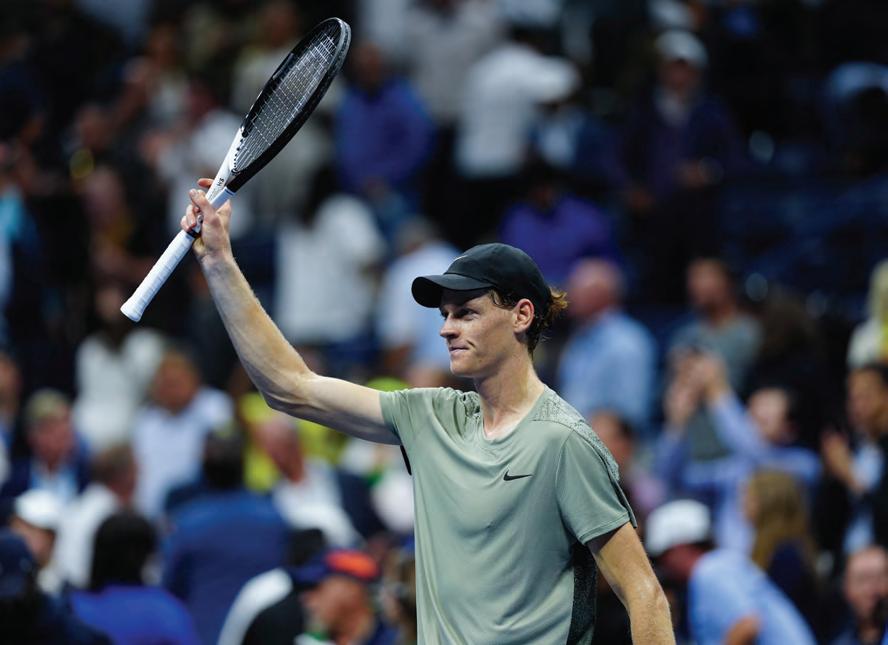
“This case had been hanging over
me now for nearly a year and the process still had a long time to run with a decision maybe only at the end of the year,” said Sinner. “I have always accepted that I am
responsible for my team and realize WADA’s strict rules are an important protection for the sport I love. On that basis I have accepted WADA’s offer to resolve these proceedings

on the basis of a 3-month sanction.”
While a punishment was handed down and Sinner would have to pay for the results of those doping tests, many looked at the suspension like a slap on the wrist that was designed to affect Sinner’s career in the least possible way.
Serena Williams said: “If I did that I would have gotten 20 years,” she told Time in an interview. “Let’s be honest. I would have gotten Grand Slams taken away from me.”
Serena alluded to the suspension Maria Sharapova received nearly a decade ago, when she was banned for 15 months after testing positive for a heart disease drug.
Novak Djokovic commented, saying that it was “not a good image for our sport” and that many players on the tour believe that there is “favoritism happening.”
Despite all of that, Sinner remains the top-ranked player in the world as he returns to the court. He scheduled
his first tournament back to be the Italian Open in Rome, an event in his home country. One of Sinner’s coaches, Simone Vagnozzi, has been tasked with making sure Sinner remains focused and stays ready for his return, and dealing with the strange feeling of being away from the sport.
“It was a shock. After realizing what had happened, I told Jannik we had to keep our heads high,” said Vagnozzi. “He did nothing wrong— anyone who read the documents knows that. I wouldn’t wish this situation on anyone. Tennis is a metaphor for life. It demands the ability to adapt to ever-changing circumstances: the balls, the surfaces, different continents. We had no choice but to accept what came our way and try to make the most of this break. Honestly, I’ve been very disconnected from tennis these past few weeks.”
That disconnect will soon end,
however, and Sinner will be back on a court competing. He has won the last two majors on the men’s side and will be one of the favorites for the French Open and Wimbledon, which are the two majors he has yet to win in his career.
His return is one that he has long awaited, but he understands that he doesn’t know what to expect from his colleagues and the fans when he comes back.
“I don’t know what might happen,” he said. “It will be difficult making a comeback with so much attention on me. The people I have around me, not just my team but my family and friends, the people I’m closest to, have no doubts about what the truth is.”
Whether you believe the suspension was fair or that there are different sets of rules depending on who the player is and how successful they are, the top-ranked player in the world will be back this spring.

There is often a lot of discussion between coaches, parents and experts when it comes to junior and high school tennis. Long Island Tennis Magazine brought together junior tennis players themselves to find out how they feel and their thoughts on tennis here on Long Island.






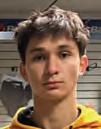


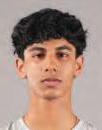

What do you enjoy most about playing high school tennis compared to junior tournaments?
Deckman: I enjoy playing on a team with my friends and being able to compete against other people. The only thing I dislike is the feeling after losing.
Famolari: The aspect that I enjoy most about playing high school tennis is the team atmosphere. Competing on a team with my friends and being able to support each other really lifts us up during matches and motivates us to play our best. I also love coming off the court, knowing whether I won or lost, that my teammates are going to be there for me.
How do you handle disappointment after a loss?
Deckman: I handle disappointment by understanding that we all have off days and it just motivates me to do better.
Erenburg: After a loss, I give myself a moment to feel disappointed, but I don’t dwell on it for long. I try to break down what went wrong and what I can improve for next time. It motivates me to work harder and come back stronger in the next match.
Golubenko: I usually handle disappointments after a loss by trying to keep a positive mentality, and always trying to improve. I try to come to practice the next day and have a set goal of what I want to do and improve on. Also, when I have a bad match, it sometimes motivates me to play another match and learn from my mistakes.
How do you feel about the rise of pickleball? Do you play at all, and/or do you see yourself transitioning into the sport?
Deckman: I have never really played pickleball but I usually only see older people play it.
Famolari: As for my opinion on pickleball, it is definitely growing fast, and it has given more people the opportunity to get into racquet sports. I’ve tried it for fun, but most kids I know still stick with tennis as their main focus.
What do you think can be done to improve the junior tournament experience?
Famolari: One thing that I think can be done to improve the junior tournament experience is having more local tournaments take place. Since most
junior tournament players cannot drive, it takes up a lot of time on the parent's schedules to drive 45 minutes for what is sometimes only one to two matches a day.
Gross: I think to improve junior tennis tournament experience there should be more line judges at tournaments, and an app to get quick responses from tournament directors.
What are some of the challenges of competing for your high school team while balancing other obligations i.e. private training/tournaments, school work, social life, etc.?
Bornstein: Balancing high school tennis with other commitments can be challenging, causing interference with school work, private lessons, and extracurricular activities. All of these obligations, in addition to being on my high school team, require careful planning and prioritization. However, having a strong support system from my coaches, teammates, and family helps me balance my schedule and stay focused on my goals.
Erenburg: One of my biggest challenges is that my matches often don’t end until around 8 or 9:00 p.m. on school nights, which makes it really hard to catch up on homework and studying to get enough sleep. There is also never enough time for me to train and do clinics during the tennis season because my time is limited as I dedicate most of it to the team.
Isham: One of the most challenging parts of being a student-athlete for me has been time management. Since my freshman year, I have been lucky enough to play at the varsity level for both tennis and lacrosse. In the past three years, I have had to learn how to balance school work, practices, and games while also maintaining a social
life. During tennis season, it becomes particularly challenging given the long length of matches due to the unpredictability of weather, court availability, and daylight hours. Many nights, the team doesn’t get home until close to 9pm after some away matches, making it difficult to complete 2-3 hours of homework while trying to get sufficient rest for the next day.
Siskind: Balancing tennis with school and other activities can be a challenge but also a great way to transition into the school year! Practices and games take up a lot of time, and since tennis is also a social sport it is fun, but can also distract from school work and social events. The season starts when school begins, so managing both tennis and schoolwork is tricky, especially with the pressure of staying in a positive attitude for your team!
How important is the team camaraderie to your enjoyment of high school tennis? Do you think more junior players should play high school tennis
to gain that experience?
Bornstein: Team camaraderie is incredibly important to my enjoyment of high school tennis. Being part of a team provides support both on and off the court. The people on my team aren’t just teammates; they’re friends who encourage one another. We support each other through both wins and losses, helping each other grow as players and individuals. I definitely believe more junior players should play high school tennis to experience the value of teamwork, collaboration, and shared goals, which motivate us all to push each other to be better players.
Isham: The team camaraderie is extremely important to my enjoyment of high school tennis because I’m spending a large part of my day with my teammates. As a player on Syosset, we make it a point to have as much teambonding as possible so we can form deeper connections on and off the court. Junior players are also able to become friends with upperclassmen who can help lead them through High School. As an underclassman, I looked up to the juniors




and seniors as mentors to seek leadership and advice, so now as a junior I try my best to be like my past mentors. I believe that more junior players should play high school tennis because you learn important skills such as accountability, sportsmanship, leadership, time management, and flexibility when you are a part of any team. Most importantly, you gain a sense of community. Personally, I have made many friends that I wouldn’t have known if it weren’t for tennis.
Mehta: Team camaraderie is one of the best parts of high school tennis—it’s a totally different vibe from individual tournaments. In juniors, it’s all about your own results, but in high school, you’re playing for something bigger, cheering for teammates, and sharing wins and losses. That kind of environment builds friendships and mental toughness in a way that solo competition cannot. As a player on Syosset we look to build team connections which really helps especially during tougher matches when all the team members are rooting each other on. I think more junior players should experience it, even if they’re focused on USTA events. The team aspect teaches you how to handle pressure when others are counting on you, and it’s a nice break from the hyper-individualized grind of high-level juniors. Plus, it keeps tennis fun, which matters when burnout is a real issue that we see especially prevalent in today’s society.
Do you feel you need to emphasize off-court recovery and personal training? If so, what do you do for it?
Benderly: I think that personal training and wellness is very under looked for juniors. Post practice and match recovery helped me to stay
healthy during the high school season when I'm playing every day. At a high level everyone's tennis skill is similar and winning matches comes down to mental and physical fitness, and strength. Strength and agility training is very important and stretching after matches/practices is the best way to prevent getting injured.
Bornstein: Off-court recovery and personal training are essential parts of being a tennis player. Before and after matches, I always stretch with my team to help prevent injuries. Additionally, I strongly believe in the importance of the mental game of tennis. Before matches, I try to stay mentally sharp and go over my tennis notes from previous matches.
Carmo: Yes, I do feel players need to emphasize off- court recovery and I enjoy it. For myself I love to stretch for 15 minutes after practice. I also believe that rest plays a big factor in recovery. For personal training I do triathlons that include running, swimming and biking.
Gross: I feel that it is important to place emphasis on off court recovery and personal training. As an athlete I do a lot of cardio off court and stretch after practice.
What is one thing you wish parents/coaches understood better about you and your tennis experience?
Carmo: I have been very fortunate to have my father be my main coach. He has guided me with my tennis experience my whole life. He understands what it takes to compete and practice but also has a good balance being a coach and a father.
Golubenko: Something I wish parents and coaches understood more about junior tennis is how difficult it can be and how it can cause a lot of stress. Especially parents who don’t play tennis themselves can have a hard time
understanding and more of a “just win” mentality rather than actually enjoying the sport.
Do you think high school matches should count towards your UTR? Why or why not?
Gross: I think UTR should count for high school tennis. I think this because the top players are more apt to do it knowing it can help boost their UTR, and by doing this it helps keep high school tennis competitive.
Mehta: I think high school matches should definitely count towards your UTR. High school tennis is competitive and adds pressure—playing for your team and school can reveal how a player performs in clutch situations, which UTR should reflect. Many players also rely on high school matches as their primary competition meaning they are unable to compete in other UTR altering events for other reasons such as cost, injuries, and more. Excluding high school matches from UTR may not be fair to players who don’t have the resources to compete in other UTR altering events.
How rampant is cheating/hooking at junior tennis tournaments? What do you think can be done to help put an end to it or at least slow it down?
Carmo: I think cheating plays a big role at junior tournaments especially at a younger age. I think cheating is a part of the sport that will always be apparent but it is helpful to have an Umpire present during matches. I think that the junior players should be honest and respectful. That is another factor that comes into play.
Siskind: Cheating can happen during matches, which makes it harder to trust the results. Having line judges would help reduce these issues and ensure the matches are fair. Encouraging
sportsmanship and having strict penalties for dishonest behavior can discourage players from cheating and help create a more honest tennis environment!
Having the U.S. Open in our backyard is such a unique part of our community. How do you take advantage of having the Open so close to here?
Golubenko: I definitely try to come out to the U.S. Open. I’ve gone every single year since I was around five-yearsold and it’s a great experience to watch professionals play and watch what they do and how they are so good.
Mehta: Having the U.S. Open so close is an incredible opportunity—it’s not just about watching matches. Many of my friends have taken the opportunity to actually be a ball person which gives you an up-close look at how pros prepare and compete. Personally, I try to go early in the tournament to see qualifiers or practice sessions, where you can watch players for free during fan week. It’s also a great way to connect with fellow team members and last year me and a few of my fellow teammates and alumni went to watch.
Siskind: I take advantage of the U.S. Open being so close by going with my either my friends or my dad as much as I can. We enjoy watching the matches together, and it’s really cool that we don’t have to travel far to experience such a big event. It’s a special opportunity for fans and players in the community to be part of something this exciting.
Do you feel you will continue with tennis after high school? In college or thereafter, what does your tennis future look like?
Erenburg: I definitely want to continue playing tennis after high school, whether it’s club or intramural.
Tennis is something that means a lot to me and I plan to play as long as I am able too. As well, after developing so many years worth of skills and experience is something that I never want to lose.
Isham: I do feel that I will continue playing tennis after high school. While I’m not planning on playing at the collegiate level, I would like to stay active and continue to play through an intramural club team. Tennis is a great lifelong sport to stay healthy, active, and stay socially interactive so I plan to continue to play for many more years.
What role do you think LI Tennis Magazine plays in the local community? How influential is the publication and what do players your age like the most about it?
Carmo: I think that Long Island Tennis Magazine plays a big role for high school tennis players. The posts and match information and updates are always very helpful. It is influential
because it’s not only a magazine, the Instagram is fitting for players my age and I love it.
Golubenko: I think that the magazine plays a big role in the local community. I think most people my age use it to check updates on high school tennis matches and results.
Gross: I think Long Island Tennis Magazine helps other tennis players stay in the loop and keep up to see who is winning the big tournaments. It is motivational to other tennis players to work hard and strive to win. I also think reading about high school tennis is entertaining for most people.
Isham: Long Island Tennis Magazine plays an important role in connecting the LI tennis community and highlighting local programs and events for players at all ages and levels. I think high school players appreciate the many articles, team photos, and player interviews during their seasons. They help connect the community through celebrated achievements and milestones and the interviews are a great way to hear other players' perspectives.
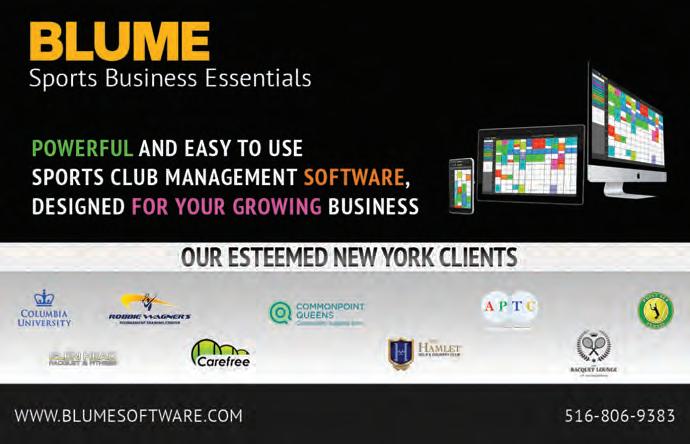
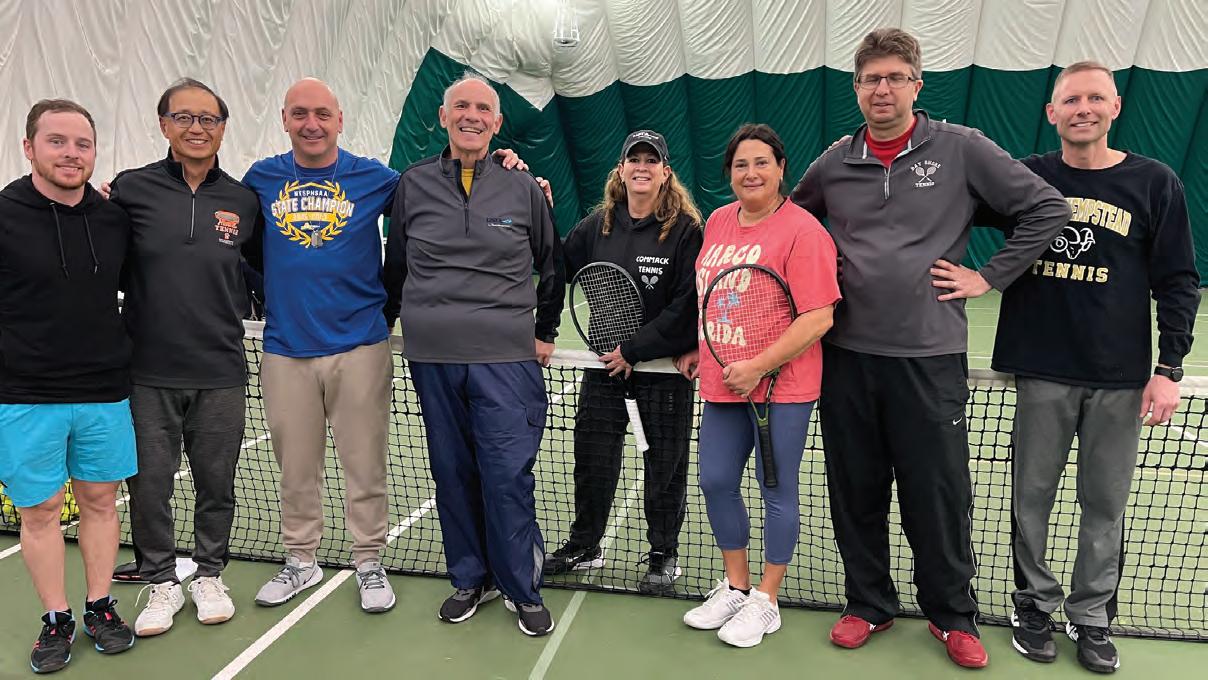
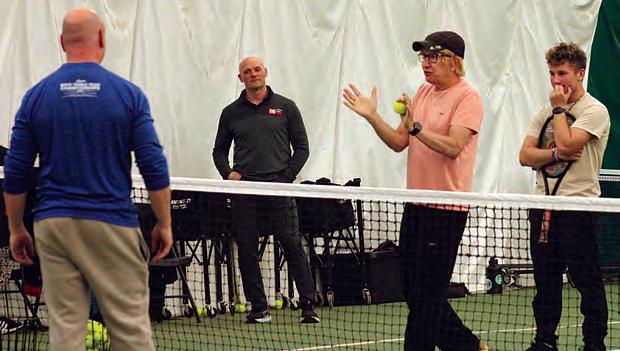
Theevent stresses the importance of high school tennis and aims to bridge the gap between high school tennis and the private tennis industry
The High School Coaches Workshop returned to Bethpage Park Tennis Center as Steve Kaplan and his team provided instruction and advice to high school tennis coaches from across Long Island. This event is a collaborative effort between Serve & Return and Grow Tennis New York, two nonprofits dedicated to growing the sport of tennis in our community.
The Workshop brings together local

high school tennis coaches, both junior varsity and varsity, to learn from Kaplan as well as other guest speakers about coaching techniques, proper warm-ups, how to coach a team, and the importance of high school tennis.
Strength and conditioning coach
Frank Dolan spoke to the coaches about how to properly warm-up their team prior to both practices and matches, and put the coaches through a variety of drills and exercises to demonstrate.
Many times in high school competition, the visiting team gets off the bus and doesn’t have a lot of time

to warm-up before the match begins. That puts a great deal of importance on how your team warms-up to ensure its an effective way to prepare for the upcoming match.
“A lot of high school tennis programs get out there and just start hitting. But what we wanted to emphasize is having an understanding of not just warming up to get a sweat going or get loose, but it’s also to change athleticism and improve movements if done the right way,” explained Dolan. “What we discussed today was doing things with intent, going through the full range of motions, thinking of keeping things in alignment, the right


posture, and all those little details that help you avoid just going through the motions. I think I was able to provide something simple that the coaches can quickly take with them and apply it to their teams right away.”
Kaplan discussed many different drills that coaches can use with their teams including proper serve toss and grip, as well as how to generate power on the forehand and backhand strokes. All of this created a well-rounded event that provided a number of local high school coaches with valuable information they can bring to their teams.
“Steve's annual coaches clinic affords all the high school coaches across Nassau and Suffolk counties the opportunity to learn new ideas and incorporate them into their high school season,” said Shai Fisher, head coach of the boys and girls tennis teams at


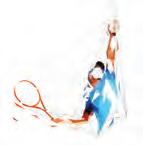

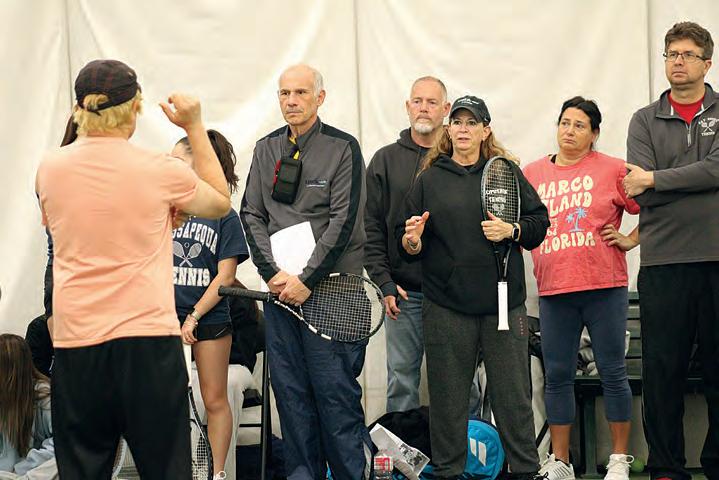
Syosset High School. “The fact that Steve offers the instructional clinic as well as the court time free of charge to the high

coaches further demonstrates his ongoing commitment to partnering, supporting, and continuously improving
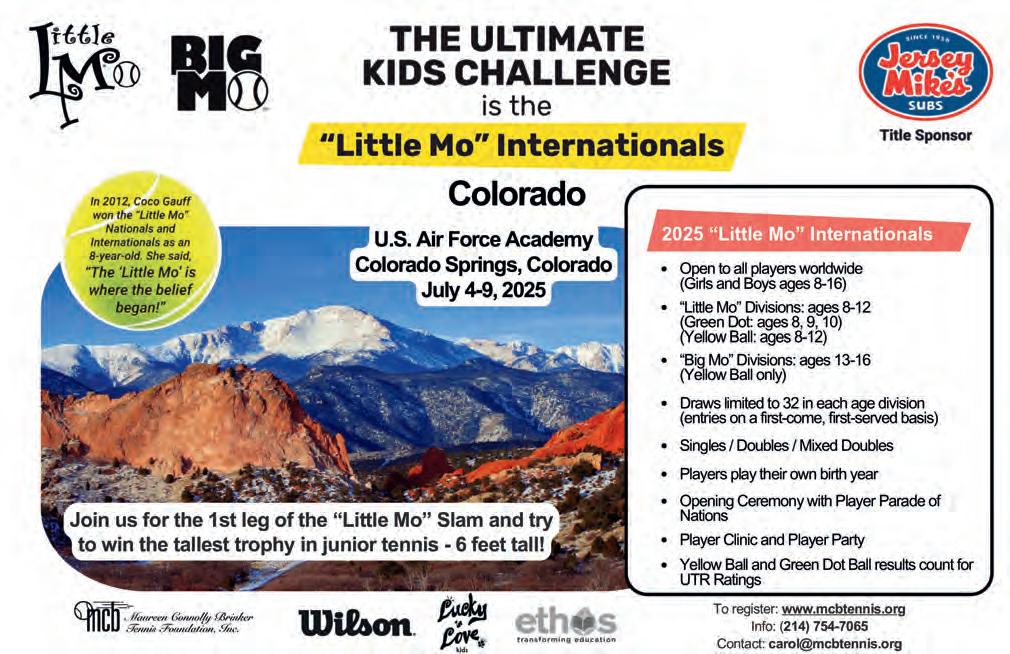
continued from page 25

high school tennis on Long Island.”
One of the primary goals of the workshop is to bring attention to just how important high school tennis is as Kaplan is a strong believer that top junior players should play for their high school teams rather than sit out to strictly focus on private training, and wants to provide the necessary resources for high school coaches.
“It saddens me that some discourage players from the high school tennis experience,” Kaplan said. “There was a time in my career that almost every top player participated, but not today with so many persuaded not to play with the thinking that, ‘I'm not going to play high school tennis because there isn't enough competition’. This idea has become a self-fulfilling prophecy. My hope is that by learning new skills at this workshop, coaches can bring

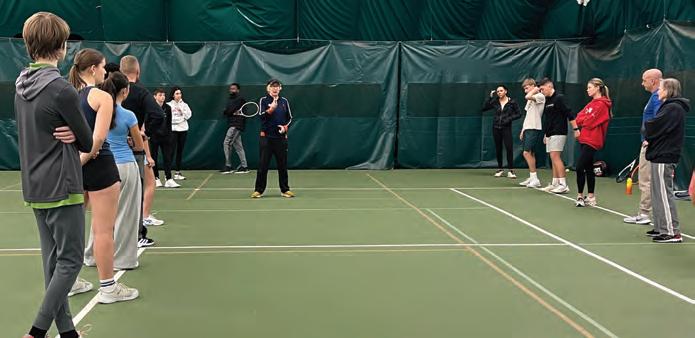
greater value to players’ high school tennis experience which will grow participation.”
David Sickmen, Publisher of Long Island Tennis Magazine, added:
“We have been collaborating on this event for years because we think it’s an important one. I’ve seen the divide
between high school and private tennis grow larger throughout the years, and as we do in most situations, we try to use our platform, resources and partnerships to bring people together. At this year’s Workshop, we did just that and we look forward to continue to doing that in the future.”
P P g rkin et N reat s,G rsh nso o ackages,S , , Play your best, golf, tennis or pickleball EPIC Family of Human Service Agencies


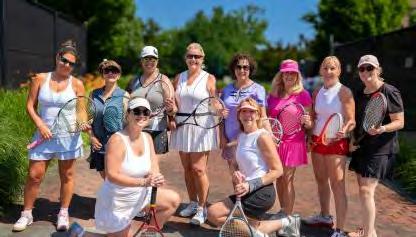


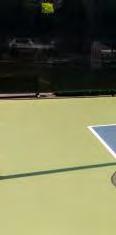

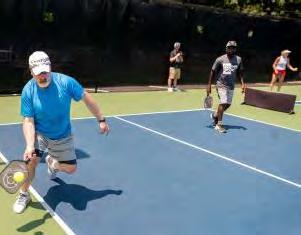


Real estate on Long Island is some of the most sought after property in the world. With gorgeous landscapes and a modern design, among other amenities, this property is truly one-of-a-kind.
With the help of Parsa Samii of Compass Real Estate, we wanted to showcase a current listing for sale. Parsa is a former professional tennis player and coach who has transitioned into real estate, with a strong understanding of both the tennis aficionado and the home buyer.
As Compass puts it, “Parsa is the ideal professional to navigate the ever-competitive real estate market.”
For more information, photos or to see more listings, e-mail parsa@compass.com or call (516) 965-7445.

95 Spruce St
Roslyn, NY 11576
$6,898,000
6 Beds • 6 Baths • 6,250 Sq. Ft.
$1,104/Sq. Ft.
Welcome to 95 Spruce Street, Roslyn Harbor – a stunning 2024 new construction!
Set on a beautifully landscaped one-acre property, this exquisite home blends transitional and modern accents throughout, creating a timeless and sophisticated design. Step into a space featuring expansive high ceilings and custom white oak details, all bathed in an abundance of natural light. The first floor offers a formal living room, a formal dining room, a butler’s pantry, an office/playroom,



a cozy family room, and a luxurious kitchen with radiant heat floors. A convenient mudroom completes the main level.
The second floor boasts a breathtaking Primary Suite featuring a fireplace, a spacious walk-in closet, and a spalike bathroom with radiant heat floors. Four additional designer-inspired bedrooms, three full bathrooms, and a dedicated laundry room complete this level of the home.
The walkout lower level is thoughtfully designed for both comfort and entertainment, featuring a guest bedroom suite, ample storage, a cabana bathroom with laundry, a private office, a gym, and a state-of-the-art movie theater.
The outdoor space is an entertainer’s dream, offering multiple gathering areas, a pristine pool and spa, lush green lawns, and plenty of room to enjoy the serenity of the one-acre property.
Additional highlights include an elevator, a full-home generator, and cutting-edge security systems.
This extraordinary home is the perfect balance of luxury, functionality, and modern elegance
TheUSTA Long Island Regional Council will again support and highlight boys’ high school tennis this season, something council members look forward to each year. While the players and coaches are working hard to play their best tennis this spring season, the LI council is working behind the scenes to distribute plaques and clothing items that will be presented as follows:
• Sportsmanship plaques will be made available to each high school coach in Nassau and Suffolk to present to one of their players in recognition of their sportsmanship on the tennis court.

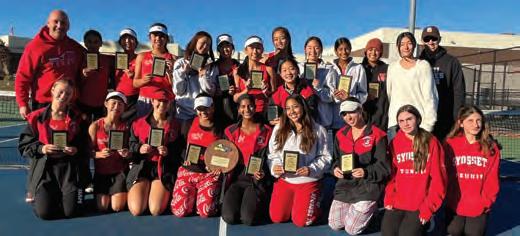
• Plaques will be presented to the winners and runnersup in the small schools and large schools Long Island
Championships played between the team champions in Nassau and Suffolk Counties.
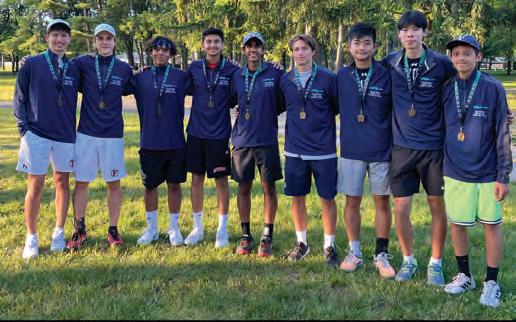
• All-State logo clothing items will be provided to each of the boys representing Nassau and Suffolk at the NYS Individual Tournament at the Billie Jean King National Tennis Center.
May 2 at Adelphi University: The USTA LI Region, USTA Eastern D&I Committee and Love Serving Autism will hold a training followed by a clinic for the students, staff and alumni of the Bridges to Adelphi Program.
May 3 at Plainedge High School: The USTA Long Island is proud to be a sponsor of the Special Olympics Spring Games North and its tennis component. Come and watch these amazing athletes and stop at our table in the Olympic Village.
May 31 at Levy Lakeside School in Merrick: USTA volunteers will present Red Ball tennis demonstrations and instruction for children and adukts during the annual Robbie’s Run 5K run and family day. Proceeds from Robbie’s Run support Forever 9: The Robbie Levine Foundation, which provides AED and CPR instruction and donates AEDs to youth sports programs. To participate in Robbie’s Run, please visit: https://runsignup.com/Race/NY/Merrick/RobbiesRun5k
June 14 at Hempstead Lake State Park: Tennis Family Fun Day Summer is for Kids Days
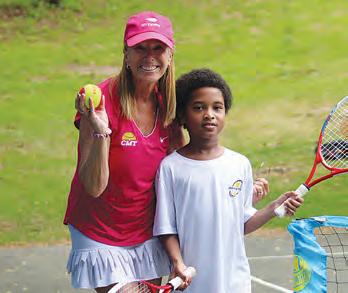

TheUSTA Long Island Regional Council’s annual kids’ day programs, presented in conjunction with Long Island Tennis Magazine, are sold out! Kids Days are Long Island’s means of sharing the love of tennis with children who may never have been exposed to the sport.
This summer, two kids’ days will be held, on July 9th at LuHi Camp and August 11th at Island Quest. Both days will feature tennis instruction and play, DJ, dunk tank, games,

Tlunch, drinks and prizes for all attendees.
Several organizations will be bringing their campers to the events, including Island Quest, Boys and Girls Club, Circulo de la Hispanico, Roosevelt Children's Academy and Family Residences, and Essential Enterprises.
One of the events will be a Diversity and Inclusion day bringing together participants from the JCC, LGBTQ+ and Special Needs communities.
he 2025 USTA Grassroots Tennis Webinar Series is exciting news for tennis enthusiasts and professionals. Registration is open for this series designed to help you enhance your facility, ensure a safe playing environment, build thriving community programs, discover new programming opportunities or elevate your
coaching career. The webinars offer invaluable insights and resources. Participants will connect with experts, access funding opportunities and stay ahead of the game.
For more information and to register: http://bit.ly/4j0qjTa
By Brian Coleman
Everysummer, our tennis community is fortunate to have the eyes of the tennis world on New York as the US Open brings the best players from across the globe to compete here during the three-week long event. With the US Open comes exciting opportunities and unique moments for local aspiring professional tennis players.
That was the case for Mark Krupkin at last year’s Open, when he was chosen to be a hitting partner for the likes of Great Britain’s Jack Draper and American Jessica Pegula, two of the sport’s best players.
Krupkin, a New Jersey native, recently recalled how that experience taught him a great deal about what makes the pros the pros.
“It was a fantastic experience. I enjoyed it a lot, and I’m hoping to do it again this year,” said Krupkin. “The quality of their ball and their movement is unbelievable. I got to see how they prepare for their practices and matches. ”
Krupkin is the topranked player in New Jersey in the Boys 18s division, according to TennisRecruiting.Net, and he will be headed to Stanford in the fall to continue his tennis career on the west coast.
Krupkin was a sought-after player during his recruitment process, and ultimately landed on Stanford due to its combination of a top tennis program and some of the best academics in the country.


That same blend is what led Krupkin to attend the Dwight Global Online School for his high school years. It was a complicated decision at first, because the public schools in his area were excellent — but the flexibility and support offered by Dwight Global were something he and his family could not pass up.
“A lot of my peers were going to Dwight at the time. My mom was really nervous at first, because she thought the quality of my education would drop by being in an online school. After my dad and I convinced her, we never looked back, and it was clearly the right decision,” he recalls. “There are so many tennis players with similar goals that go to Dwight, and the school
could not be more supportive in how they help us focus on our tennis, while also maintaining an academic standard.”
Attending Dwight has offered Krupkin flexibility, such as extensions or the ability to view his classes at different times, while also allowing him to thrive in rigorous classes under the guidance of Dwight faculty members. Krupkin’s academic course load was challenging and included college-level classes like Linear Algebra and AP Calculus BC, as well as several AP Physics, Computer Science, and Economics classes.
Dwight Global also forced Krupkin to be independent and take control of his own education, something that will benefit him when he heads off to Stanford.
“Each week's assignments are given at the beginning of the week, and nobody’s holding your hand through the process or reminding you about deadlines. It’s on you to get them done,” he explained. “You can do them all right away or spread them throughout the week. That is exactly what college is like. You have to be on top of your responsibilities, and keep track of what you need to do. Dwight has helped prepare me for that.”
Krupkin has dreamed of being a part of Stanford since he was younger, so when he was offered a scholarship to become a Cardinal, it was an opportunity he could not pass up.
“I always wanted to go to Stanford,” he recalls. “It’s the best combination of academics and athletics. I was looking at a variety of different schools, but at the end of the day, I loved everything about the Stanford program. I’m super excited because everyone on the team has the goal of becoming a professional tennis player, but at the same time, they understand the importance of an education. I can bond with these people and learn from them. It’s a really great group of guys, and I’m extremely excited for the fall.”
When he arrives in sunny California later this year, it will be the latest chapter in a tennis journey that began when he was four years old, when he first picked up a racquet. Inspired by his dad, he began taking lessons with the very same

coach as his dad.
From an early age, Krupkin embraced the competitiveness that tennis brought out of him, and the individualistic nature it possessed.
“You’re out there on your own, and you are accountable for each and every one of your mistakes,” he said.
As he continued to progress through his tennis, he grew physically as well. He now stands at 6’6” with a booming serve and powerful forehand to boot. Being tall, he remains focused on reinforcing his footwork, but has the necessary weapons in his game to become a formidable collegiate player.
In both 2023 and 2024, Krupkin ended his years as the winner of the Boys 18s division at the USTA Winter Indoor National Championships, proving that he belongs among the top junior players in the country.
Krupkin’s goal for the upcoming months is to continue to improve his game so that he is ready to jump directly into the Stanford lineup in the fall. He knows he cannot rest on his laurels and, even with his college commitment in place, he still has a lot to prove.
“You gotta live up to it now,” he says. “It definitely makes me want to play more, because I have to fight for that lineup spot, and fight to prove that I belong. That motivates me. I want to keep playing these top junior tournaments, and I want to transition into playing some ATP Futures events later this year. That’s the goal.”
Krupkin is the latest example of how top junior tennis players can benefit from attending Dwight Global Online School. Over the last several years, there has been a long line of successful players who have been able to focus on their rigorous tennis schedules while receiving a great education.
With the Dwight Global experience under his belt, Krupkin will continue to thrive on and off the court, at Stanford this fall, and beyond.



Christopher Morley Tennis offers year round Juniors and Adults tennis programs for all levels. Summer Camps, Holidays Mini-Camps and Tournaments, Fitness, Special events and more.
Contact us for more information!
Salomon Levy slevy@cmttennis.com 516-214-1900
Ricardo Aguirre
raguirre@cmttennis.com
516-214-1921


















































































































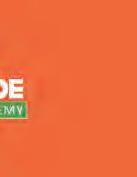















































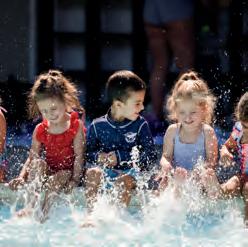


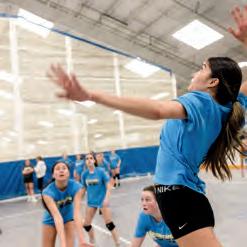


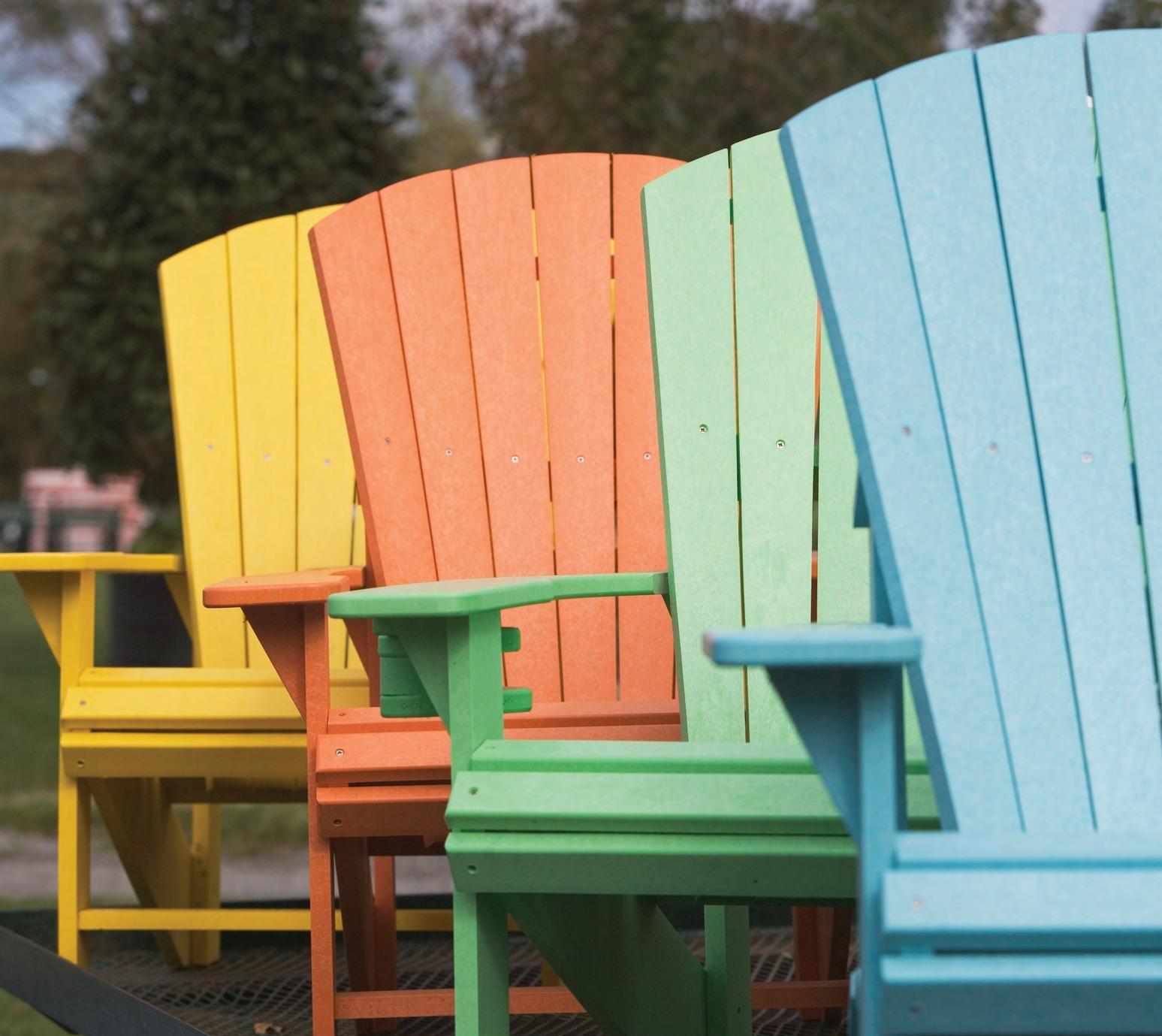
In the summer, people from across Long Island and New York City flo to enjoy the sun, while sitting by the pool or ocean, and taking part outdoor activities. One of those activities, and perhaps its most popu It may be the favorite activity for Hamptons-goers, and there is no sho or opportunities to play out on the East End, from hitting around at loca them up and playing on a private court in a luxurious Hamptons home Long Island Tennis Magazine has compiled some of the best places to out in The Hamptons this summer!

ock to the Hamptons, in an array of ular, is tennis. ortage of tennis courts al parks or lacing
. o play, stay and shop
AnnaconeTennis.com
info@annaconetennis.com (865) 300-7323

Annacone Tennis Management provides an array of services in the Hamptons, and can help produce programming and consulting for your neighborhood courts, country clubs, tennis clubs, resorts and more. One of the programs offered is MyHamptonsPro, which is a concierge tennis company specializing in providing the highest quality offsite tennis services in the Hamptons.
This service is available on your private court, at one of our private courts, or at your tennis facility. Focused specifically on creating the utmost in customer satisfaction, MHP provides comprehensive tennis services from world-class tennis professionals to fit all of your needs. MHP tennis pros specialize in private tennis lessons that are customized to your specific tennis goals, with flexible times and days available to meet your needs. Steve Annacone, Director of MyHamptonsPro, has been a tennis professional and coach for over 45 years. Originally from Sag Harbor, NY and a graduate of East Hampton High School, Steve has been very involved in the tennis community in the Hamptons.
By understanding that each player has specific needs and creating a customized tennis experience to accommodate these needs, Steve and the MHP staff will help you get the most out of your time on the court.
91 South Fulton Drive Montauk, NY 11954
(631) 267-8525
GothamTennis.com
Info@GothamTennis.com

For over a decade, Gotham Tennis Academy has become known for innovative, worldclass tennis instruction in NYC and the Hamptons. Gotham Tennis – Montauk is on a beautiful nature preserve, just minutes from the center of Montauk. Their eight pristine clay courts are meticulously maintained and open to the public, offering a full range of popular camps, private lessons, home lessons and clinics suited to your level of play and interests. Beginners, rising stars, recreational players, and tournament players are all welcome.
Instruction and fun is always geared to your age and level of play. Private lessons with Gotham Tennis Academy’s world-class tennis professionals are available not only at
our Montauk club, but also for home lessons throughout the Hamptons from Southampton to Amagansett including East Hampton, Sagaponack, Water Mill, Bridgehampton and Shelter Island.
In the summer, Gotham Montauk offers tennis and sports camps, private lessons, adult clinics, private events and parties, as well as home lessons. Gotham Montauk also offers affordable memberships to get the family get into the game and achieve all of your tennis goals this summer.
172 Buckskill Road
East Hampton, NY 11937 admin@hamptonracquet.com (631) 324-0297 HamptonRacquet.com

partake in wellness programs, and other treats for many years, Hampton Racquet is one of the oldest tennis clubs in the Hamptons and has established a well-earned reputation as a leading club in the community.
Regardless of age or skill level, there’s an opportunity for everyone to grow at Hampton Racquet. Offerings including private tennis lessons, clinics, court rental, summer camp, pickleball, off-site lessons, home-court maintenance, pro shop, stringing services, restaurant and more.
There are several different packages to choose from when considering options for lessons and play at Hampton Racquet. They have monthly and family memberships that provide members with perks and discounts for services at the club. Whatever an individual’s goal is when they enter Hampton Racquet, they will be treated with the utmost attention with a staff that always aims to not only meet but exceed the expectations of its clients.
Hampton Racquet Club is located in the beautiful East End town of East Hampton at 172 Buckskill Road. Serving up tons of opportunities to play not only tennis, but pickleball,
Though Hampton Racquet has been considered a tennis club first and foremost for all their years in business, they have included more and more wellness programs and additional sports as they not only keep up with trends but set their own. They have a JULUKA fitness program offered as one-hour classes, and packages are available. They also have a Pilates program led by Ashley Patten who has extensive experience in Pilates as well as a huge wellness and fitness background. Whether you’re looking to build upon your wellness routine, have some fun playing pickleball, sharpen your tennis skills, share court time with likeminded individuals, and of course a place for your kids to enjoy summer camp and take their tennis to new levels, Hampton Racquet is the place to be this summer in East Hampton! Visit www.hamptonracquet.com to learn more! continued from page 35




Ross School Tennis Center
20 Goodfriend Drive
East Hampton, N.Y.
Ross.org/Tennis tenniscenter@ross.org (631) 907-5162
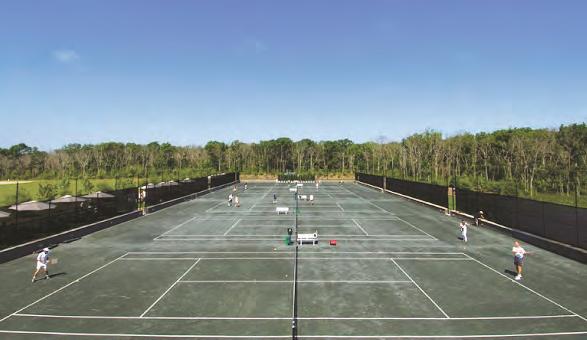
Ross School Tennis Center (RSTC) is the premiere training center in the Hamptons, boasting a beautiful tennis facility that is open to the public and located on the Ross Upper School Campus in East Hampton, N.Y. The Tennis Center features six HarTru courts that are enclosed by a bubble from mid-fall through mid-spring, allowing for year-round play. The Tennis Center features state-of-the-art amenities such as spacious locker rooms, lower level lounge, convenient snack bar, and ping-pong tables, and the staff provides a fun and supportive atmosphere that allows for the greatest amount of success.
After-school programming, a dynamic program for junior

players, and specialized summer programs are offered to make Ross Tennis Center the place to play tennis in the Hamptons.
After-school Programs (Pre-K–Grade 12)
Nursery–Grade 4: Specialized one-hour training program where players build a strong foundation through a variety of game-based and cooperative activities using 10U ageappropriate (Red, Orange, or Green) balls and nets that will prepare them for eventual full-court play.
Grade 5–Grade 12: Players build off their 10U foundation to further develop fundamental skills and techniques as they transition into yellow balls and prepare for full-court tournament competition. Ball control, strategy, and work ethic are all emphasized in this 90-minute session of drills and point play.
Players in kindergarten and higher are required to play twice per week in this program.
RSTA Yellow+ is for players over 12 years old who play either on a JV or Varsity school team. There will be practice every day for two hours after school. Tryouts can also be evaluated by an RSTA coach if you are not yet a team member. Participation at both UTR and USTA tournaments is encouraged but not a requirement. Lessons and Court Rentals: Ross School Tennis Center also offers adult clinics, court rentals, and private and group instruction for all ages and levels. The Tennis Center is also used for a variety of special events and is available for private parties.
Specializing In Sports Court Construction "Expanding



continued from page 37
Hamptons
320 Abrahams Path
Amagansett, N.Y.
(631) 267-3460
SportimeNY.com/Amagansett
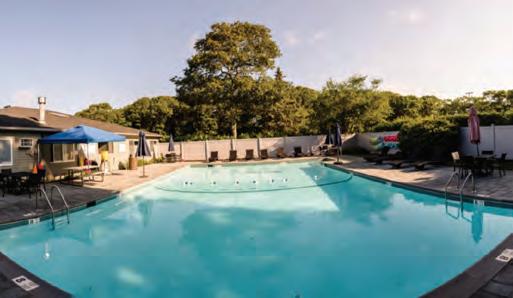
Located in the Town of East Hampton, SPORTIME Amagansett’s 23 acre campus features 33 pristine outdoor Har-Tru tennis courts, one hard-surface tennis and pickleball court, a heated outdoor pool and so much more for members, students and campers to enjoy. The Hamptons’ summer home to the John McEnroe Tennis Academy, SPORTIME Amagansett welcomes aspiring young players to train at one of the world’s best academies when on the East End. The club is also home to East Hampton Sports Camp @ SPORTIME, which offers preschool and multi-sport full-day, full-summer fun for kids ages 3-13.
The SPORTIME Amagansett Sports Arena, open year-round, features a climate-controlled, regulation size rink that
subdivides into three smaller courts that allow for multiple sports activities and small group training. Sports offered include hockey, soccer, basketball, volleyball and pickleball.
SPORTIME Amagansett offers both residents and Hampton visitors of all ages world-class tennis, pickleball and sports programming, camps, events, tournaments and more.
2571 Quogue Riverhead Road
East Quogue, N.Y.
(631) 653-6767
SportimeNY.com/Quogue

Named the best tennis club on the South Fork by Dan’s Papers each year from 2020-2023, SPORTIME Quogue is a yearround, full-service tennis, fitness, summer camp and sports facility located in East Quogue, catering to the surrounding communities of Westhampton, Remsemberg, Quogue, Southampton, Hampton Bays, Eastport, Riverhead, the Moriches and the North Fork, serving both locals and visitors alike..
SPORTIME Quogue features four indoor Har-Tru soft-surface tennis courts and 22 outdoor Har-Tru courts, in addition to a heated outdoor pool, a full-service health and fitness club, a multi-sport court, and locker rooms with saunas. SPORTIME Quogue serves tennis players starting at the age of three, including junior pathway programs, as well as dynamic instructional programs for adults of all levels.
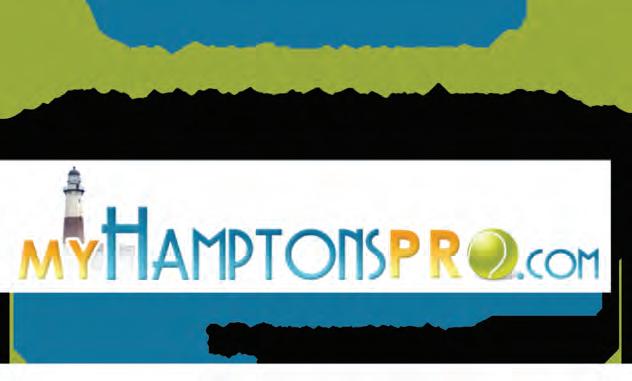

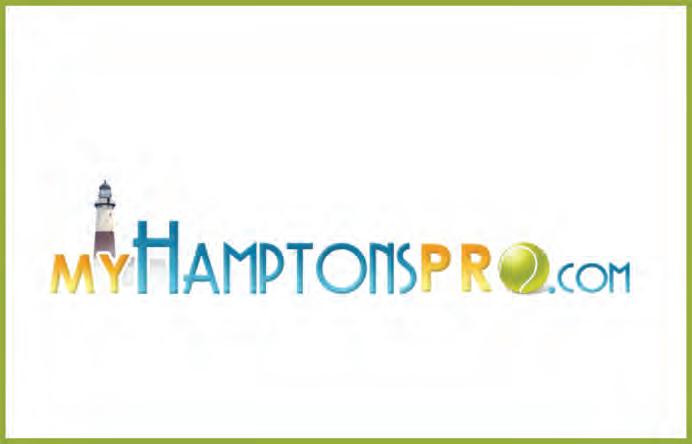
While SPORTIME Quogue thrives yearround, the summer season is alive with a large outdoor tennis community, including Hampton vacationers and snowbirds returning for summer season. SPORTIME Quogue’s full-day summer camp, including preschool, multi-sport and tennis offerings, is recognized as one of the top summer camps in Westhampton.
Tennis East
73 Main Street
Southampton, N.Y.
(631) 283-9535
TennisEast.com

For more than 50 years, Tennis East has been a staple of the tennis community on Long Island’s East End. Tennis East offers an extensive selection of men’s, women’s and junior’s rackets, apparel, sneakers, strings and accessories.
Tennis East keeps up to date with the latest and most popular products to make sure its customers are always up to date with the newest gear, and it even features a complete line of 10 & Under Tennis equipment, as well as a line of other racket sports, such as paddleball or pickleball. Stringing services and demo rackets are also available.
Baron’s Cove
31 West Water Street
Sag Harbor, N.Y. (844) 227-6672
CapeResorts.com/Barons-Cove

The newly-renovated Baron’s Cove Hotel is the Hampton’s preeminent All-American resort destination. With 67 charming village and harbor-facing guestrooms, gorgeous lofted suites boasting sweeping harbor views, village rooms featuring intimate private gardens, and cozy dog-friendly accommodations, Baron’s Cove caters to every discerning traveler seeking a relaxing getaway on the East End.
290 Old Montauk Highway Montauk, N.Y. (631) 668-2345
GurneysResorts.com/Montauk

Gurney’s Montauk Resort & Seawater Spa is a Hamptons icon and the only yearround resort in Montauk. Providing guests with direct access to a 2,000-foot private sand beach, Gurney’s features 146 rooms, suites, and beachfront cottages, all delivering dramatic ocean views. With five unique dining and drinking venues, Gurney’s presents an array of food and beverage options, from elegant seasonal cuisine to casual fare to craft cocktails. Gurney’s also offers over 25,000-square-feet of meeting and banquet space, for hosting a wide range of business and social events. Its acclaimed spa is renowned for its healing treatments and ocean-fed seawater pool, the only pool of its kind in North America.
continued from page 00
Thissummer, countless people from all across the Metropolitan area head east to enjoy the splendor of the Hamptons. With an array of fun summer activities to take part in, tennis and other racquet and paddle sports are at the top of the list, and there is perhaps no better place to play than at Hampton Racquet Club.

“We are thrilled to reunite our community and share an unforgettable summer together,” said Hampton Racquet Club owner Monica Graham. “With brand-new facilities, exciting activities, engaging events and camaraderie, we are dedicated to providing the best services and creating cherished memories for all our members.”
Graham is the younger sister of John Graham, who was the heart and soul of Hampton Racquet for more than a decade. Through the strong and welcoming community he built, and his desire to bring the love of tennis and racquet sports to players of all ages, John Graham built Hampton Racquet into one of the shining beacons of the Hamptons athletic scene.
Unfortunately, John passed away in 2024, but not

before leaving behind a legacy of love, generosity, and community that will be cherished for years to come. In doing so,
Hampton Racquet became more than just a club—it is a legacy, a testament to the community that John passionately and tirelessly built over the years.
“As we carry forward John’s legacy at Hampton Racquet, we are committed to instilling these same values in our members and young players, ensuring they endure for generations to come,” Monica said.
Monica and her team at Hampton Racquet will continue that legacy this summer, and bring the love of sport to all people who walk through their doors. At its summer camp, all campers earn the benefit of exclusive membership perks, which include access to the Spa, court rentals, clinics & its on-site Restaurant, as well as family inclusion, where campers can invite their parents as their special guests, so the whole family can share in their dynamic club experience.
Campers are grouped by age and skill level to ensure they receive the most effective coaching and development. To continue to cater to all, tennis isn’t the only sport offered at Hampton Racquet.
Pickleball, padel and beach tennis are all available, creating a wellbalanced offering of racquet sports to ensure there is something for everyone.
For more than 50 years we’ve been the year-round, full-service retail tennis, paddle, squash and pickle ball store of choice for East End racquet sport enthusiasts. Tennis East has an extensive in-stock selection of men’s, women’s and junior’s racquets, sneakers, apparel and accessories from the top manufacturers for players of all ages and skill levels. Please call or e-mail us at tenniseastsh@gmail.com to place orders SOUTHAMPTON l 73 Main Street l (631) 283-9535
Hampton Racquet possesses the perfect balance of a club rooted in a desire to welcome in its community while also the perks of being out in the Hamptons in the summer. There is a wellness area, which includes red lights, massages, salt therapy and more, plus a top-notch restaurant and cafe that hugs the club’s tennis courts. When out in the Hamptons this summer, make Hampton Racquet one of your destination spots. Visit HamptonRacquet.com to learn more!

The Hamptons tennis market is a unique one and to help break it down, Long Island Tennis Magazine spoke with Annacone about the way he approaches tennis teaching out in the Hamptons during the summer:
LITM: Many people in the Hamptons have Tennis courts on their own property. How prevalent is that market for coaches coming to the private residences as opposed to a club/camp?
Annacone: It has become more and more common for people to request lessons at their private homes in the Hamptons. I was first introduced to this back in the 1980's with the Huggy Bear ProAm Tournament at the Forstmann's in Watermill. Many of the homeowners in the Cobb Road area had "private coaches" come to their courts and give lessons. These days it is happening from Montauk all the way to Westhampton, as well as on the North Fork of Long Island. There are more courts and numerous requests and some all year round, weather permitting.
LITM: Do you see a lot of requests for at home tennis lessons from share houses? Families?
Annacone: I haven't seen much from the share house situation but families tend to like this special service because they can have kids do lessons together right at home or put a few hours together and accommodate the whole family without ever leaving their property.
LITM: Are there certain towns where it’s more prevalent than others?
Annacone: The busiest towns for the "concierge" tennis requests seem to be East Hampton, Sagaponack, and Sag Harbor, but Watermill and Southampton are also favorites sites for these requests.
LITM: How would you describe the overall Hamptons tennis market heading into 2025? And how has it changed through the years?
Annacone: Tennis is extremely popular in the Hamptons and really exploded during the Covid pandemic. People are playing even more now and many come out to the Hamptons specifically for the tennis offerings. It used to be one of the great amenities on the east end but now it is an attraction in itself.
LITM: What makes the Hamptons Tennis market unique?
Annacone: The tennis market in the Hamptons is unique because many of the clients only have a specific, limited time that they are available. This makes them want to try to jam as much tennis into their stay as possible, and creates a huge demand at all of the tennis facilities in the area (and requests at their own home courts), requiring a large staff of pros that can accommodate a very diverse group of players-singles, doubles, beginners, advanced players, kids, adults, as well as young and old. In addition, there are many requests from celebrities since this area is a favorite for the stars.
continued from page 00

Long Island Tennis Magazine will once again be hosting part of our Summer Series presented by Orlin & Cohen Orthopedic Group, in the Hamptons, and are excited to be offering two Long Island Tennis Magazine Tennis Challenge events this summer on the east end.
The first tournament will be held on Saturday, June 7 at Sportime Quogue, featuring eight different divisions of play, four Men’s Doubles categories and four Women’s Doubles categories.
The event features all of the amenities players have become accustomed to at our events, including competitive
and well-organized doubles play, catered lunch, complimentary happy hour, prizes for winners and features in Long Island Tennis Magazine.
Visit LITennisMag.com/Events/JuneTennisChallenge to learn more and to register.
“We are excited to host the LITM Challenges this summer in the Hamptons for the fifth year in a row,” said David Sickmen, Publisher of Long Island Tennis Magazine. “Sportime Quogue has proven to be the perfect host site as they accommodate our large draws on their outdoor courts, and we are able to bring people the amenities they have become used to on Sportime’s large pool deck. We look forward to seeing everyone back on the courts for fun in the sun this summer.”
Check out this Executive Florida property featuring an upscale home:
• 3,539 sq. ft., 3-bedroom, 3-car garage, 3 1/2 bath plus a study and exercise room, pool, hot tub and your own Har-Tru tennis court
• This double-lot property comprises 1.7 acres in a 24-hour manned, gated community in Spring Hill, Florida - 22 feet above sea level, and 2 1/2 miles from the Gulf of Mexico
Only $765,000!
Contact Realtor Eka Aguilar (352) 573-8944 • EAguilar3003@gmail.com www.EKASELLSHOMES.com
To close out the summer, the September Challenge will be held on Saturday, September 8 at SPORTIME Quogue. More information and registration portal can be found at LITennisMag.com/Events/September Tennis.
“These events are always so well put together, and they do such a great job of organizing the draws,” said Ray Omid, who plays in the LITM Challenges. “There is great food, drinks, and a warm welcoming atmosphere. The LITM Challenges are different than your normal tournament and are phenomenal.”

Ihearda well-known coach say, “We have to remember that many great coaches say things very wrong in terms of sports science, but it’s how they communicate and motivate that makes them great.
The more I learn about sport science, the more this is apparent to me. Just see them as great artists, not scientists.”
Let's unravel this:
Coaching can be seen as having two basic communication components as the message we deliver can be informational and also inspirational.
The quality of the message is based first on the quality of the information in which it is based. Specifically:
• Is it correct?
• Is it understandable?
• Is it actionable?
• Is it helpful?
• If it is incorrect can it have any of the other qualities?

The quality of the message is also based on the quality of the delivery because we are all emotional beings. Specifically:
• Does it motivate?
• Does it promote self awareness?
• Do we accept it?
• Is it sustainable?
• Do we believe that coaching is first and foremost a profession or a performance art?
If it's a profession, can we think of any, outside of the performing arts, in which the quality of the delivery is more important than the message?
If your doctor sang like Whitney Houston when telling you to eat rat poison to treat a cold, would you then just see them as a great artist?
I would hope that a person in a leadership position giving bad information was not persuasive. Wouldn't you?
By Steve Kaplan
Coaching is art and science, but is art devoid of science? Is it any coincidence that one of the greatest artists of all times, Leonardo Da Vinci, is also one of history's greatest scientists?
The foundation of art is science, and the foundation of great coaching is the quality of the message AND the delivery.

Steve Kaplan is the owner and managing director of Bethpage Park Tennis Center, as well as director emeritus of Lacoste Academy for New York City Parks Foundation, executive director and founder of Serve & Return Inc. and codirector of The City Classic Junior Tennis Academy. Steve has coached more than 1,100 nationallyranked junior players, 16 New York State high school champions, two NCAA Division 1 Singles Champions, and numerous highly-ranked touring professionals. Many of the students Steve has closely mentored have gone on to achieve great success as prominent members of the New York financial community, and in other prestigious professions. He may be reached by e-mail at StevenJKaplan@aol.com.

CaliClay Systems info@caliclay.net caliclay.net (805) 698-9830
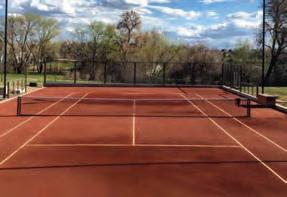
SOLVES MANY ISSUES:
• Differentiates your facility from others
• Provides a new revenue stream
• CaliClay court surface is much more forgiving on the body and fun for the players
• Very competitively priced
• Low maintenance and 70% less water use than other clay cour t surface
• Alleviates cracks in the future
• Installs on top of existing hard court or new 95% compact • base in about 5 days
• Water before play – average 150 gallons per day when in use
• Brush and line after use. Add material as needed. Roll occasionally or not at all
• Red basalt material will not stain clothing
EASY
• Brush and line after play.
• Roll once a month or as preferred.
• Never scarify.
• No seasonal closing or re-opening in winter environs.
• Don’t water when not in use – for days, weeks or months.
• Add material as needed – average court uses 3040 bags annually – 10 year warranty

56 Brook Avenue Deer Park, N.Y. (631) 242-0220
CenturyTennis.com
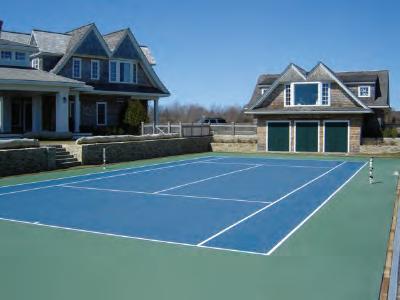
Since 1965, Century Tennis has been dedicated to the growing sport of tennis by building quality tennis courts and providing a specialized service to the tennis club industry, as well as the private community. By maintaining a highquality of service and customer satisfaction over the years comes a trust that is ever so hard to attain.
“We simply want to be the best at what we do.”
In order to build great tennis courts, you have to start at the bottom with an understanding of soil conditions and converting it to a good base. Lasercontrolled road graders enable Century Tennis to build with accuracy.
Building Post-Tensioned Concrete, instead of the old asphalt type courts, are proving to be a great alternative for “crack-free” tennis courts.
Whether it is a hard court with the softness of Deco-Turf or Classic Turf Rubber or whether it is a soft court like Har-Tru or Hydro Court, or a surface that offers a little of both like Nova Synthetic Turfs … Century Tennis can deliver.
The company is a member of the American Sports Builders Association (ASBA), Better Business Bureau (BBB) and the Long Island Builders Institute (LIBI). Century Tennis’ building techniques meet and or exceed those of the ASBA and the USTA and with its “Certified Tennis Court Builder” staff assures this quality. The company’s intention is to deliver the very best tennis courts for the most demanding players and tennis club owners.
“Expanding the game of tennis, one court at a time.”
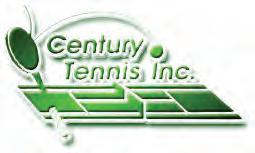

P.O. Box 55 Woodbury, Conn.
(800) 246-7951
ClassicTurf.org

Classic Turf Company specializes in the design and construction of sports facilities, including tennis courts, basketball courts and running tracks. Classic Turf Company was one of the first to introduce post-tension concrete technology to the sports industry in New England and has pioneered its use in the construction of tennis courts, basketball courts and running tracks. For more than three decades, Classic Turf Company has created, manufactured, and installed its sports surfaces through North America and the Caribbean, and has revolutionized the sports surface industry with its patented, innovative surfaces for tennis courts, basketball courts and running tracks. Post Tension Concrete, combined with one of the Classic Turf Company’s sports surfaces, is a one-time investment.
Classic Turf Company is a family-owned enterprise, with over 35 years of experience backing up our guarantee. We employ staff with Level 1 and Level 2 Certifications from PTI (Post Tensioning Institute) as well as an ASBA (American Sports Builders Association) Certified Tennis Court Builder to ensure your facility is constructed to the highest standards in the industry.
166 Industrial Way
Troy, VA 22974
(877) 4-HARTRU
HarTru.com

Har-Tru, LLC is a global sports company based in Troy, VA. It is the world’s leading provider of court surfaces, court consultation, court equipment and accessories – serving tennis, pickleball and other sports. The company strives to help others build and maintain the best courts in the world, leveraging its products, knowledge, and experience to meet the needs of each customer most effectively. Har-Tru is active in the industries it serves as an advocate and sponsor of tennis and pickleball related activities.



National Metal Industries
2 Neil Ct
Oceanside, NY 11572
NMIFence.com
sales@nmifence.com (516) 594-0365

For over 60 years National Metal Industries Fence has been one of the leading manufacturers and distributors of metal, PVC, aluminum, and wood fencing on the East Coast, and has the reputation, experience, knowledge and expertise for all of your fencing and wind screen needs.
NMI offers NOW Shade Windscreens with the benefits being:
• Blocks up to 90% of the Sun’s harmful rays
• Will not fade, shrink, mold and mildew
• 90 percent visibility blockage
• Applicable for all season – mildew and mold free
• Water & UV resistant fabric
• 75 percent Privacy
While they come in colors green, black, brown, tan, blue, grey, white and red, NMI offers Custom Logo Banners to help showcase your brand, school colors and more. Perfect for field advertisements, construction sites or store fronts, our digitally printed banners incorporate three-to-five-year solvent inks to ensure vibrant color and a long lifespan. All four edges are reinforced with a double-stitch 3-ply hem and grommets every 12".
NMI has the ability to put full color logos digitally printed on our its eight oz mesh then cut out and sewn onto any of our windscreens. An excellent and economical way to add multiple full color logos to your windscreen.

1455 New York Avenue Huntington Station, N.Y. (631) 427-5904

VelveTop Products is a family-owned and operated business since 1968. VelveTop is a stocking distributor of a full line of tennis court materials and equipment, including:
• Deco Turf: The Cushioned Tennis Surface of Champions
• Har-Tru: Developing Champions Since 1932
• Douglas Sports: Nets, Windscreens, Divider Nets
• RiteWay Crack Repair Systems
• Hadeka Red Clay
For more information, call (631) 427-5904, e-mail elsy@velvetop.com or visit VelveTop.com



Helping young athletes attend the colleges of their choice, on full tennis scholarships when possible, is a foundational goal of SPORTIME and the John McEnroe Tennis Academy (JMTA). With dozens of JMTA students currently competing at top colleges across the country, today the Academy announced the Ninth Annual John McEnroe Tennis Academy College Recruiting Combine, scheduled for the weekend of June 28th and June 29th, 2025, to be held for the second consecutive year at the newest SPORTIME and JMTA location: SPORTIME Port Washington.
The Combine, a substantial success in its first eight years, will again give select rising high school sophomores, juniors and seniors, from around the country and beyond, both JMTA and non-JMTA students, the opportunity to showcase their technical and tactical tennis skills, and their athletic abilities, in front of coaches from top colleges and universities. The Combine also features a live-streaming platform, which gives players the opportunity to perform for a wider group of coaches. Last year, over 100 coaches from across the country “attended” the event, virtually, joining those who attended in-person. “JMTA is committed to preparing our players for college tennis, and to working with
them to identify, and to help them to attend, the colleges and universities that best suit them, ”said John McEnroe. “The Combine has been a big hit in its first eight years, and with the 2025 event returning to SPORTIME Port Washington, where my brother and I, among others, trained as juniors, it promises to be extra special for me and Patrick.”
The Port Washington Tennis Academy, now SPORTIME Port Washington, and one of two JMTA satellite locations on Long Island, was where legends John McEnroe, Patrick McEnroe, Vitas Gerulaitis, Mary Carillo and Tracy Austin, among others, trained as juniors. An $8 million plus facility renovation is nearing completion, and the facility features 7 oversized, sub-irrigated, softsurface, Har-Tru tennis courts, 6 new hard-surface tennis courts and 12

new dedicated pickleball courts, as well as many other upgrades and amenities.
The 2025 JMTA College Combine will welcome 50 boys and 50 girls. Coaches representing all three
NCAA Divisions are expected to attend, with 2025 coach commitments to-date including coaches from Brown, Baylor, Cornell, Dartmouth, Penn State, William & Mary, Wake Forest, Yale and many other top programs, with many more coaches expected to confirm their attendance in the weeks to come. Representatives from prestigious leagues, including the Ivy League, ACC, Big East, SEC, Big 10, Patriot League and NESCAC attended in previous years and are expected again this year.
Interested players can access more information, and apply to participate in the Combine, at www.SPORTIMENY.com/JMTACombine . Combine applications for the 100 Combine spots available will be accepted through May 31st. The
continued on page 50

Combine Selection Committee will evaluate each application based upon objective criteria, and applicants will be informed of their status as “admitted” or “wait-listed”. Those who are wait-listed will be contacted if they are, subsequently, admitted.
Player check-in will begin at 8:00 a.m. on both Combine days. Participants will compete in singles and doubles match play, with tracked results that count toward their UTRs and WTNs. Players will also receive athletic performance assessments and will be invited to participate in Sports Vision Testing and in a College Coaches’ Panel Discussion.
Combine partner, Tennis Analytics, will be video-recording
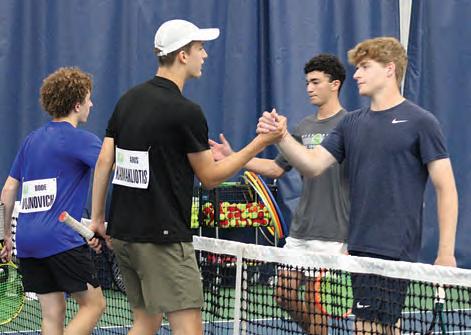







































participant packages, including match videos with detailed analytics. Included for each Combine participant is an integrated recruiting package, including the match videos, which are made available, digitally, to both participants and coaches, at
the touch of a button on their personal Player Portals.
For further details, and for information about JMTA’s College Placement Service, visit www.SPORTIMENY.com/JMTACombi ne or email




























































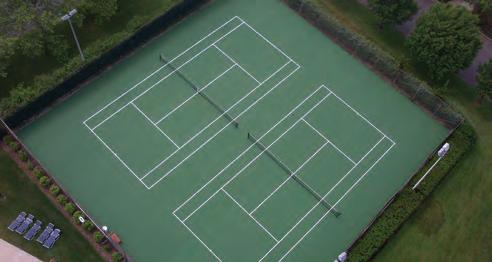




















By Dr. Tom Ferraro
The ineffable state known as “The Zone” is the Holy Grail of sports. Every athlete seeks it. Any athlete who has played in the zone remembers the ease, joy and satisfaction of finding this special place.
The dictionary defines “The Zone” as “An area or stretch of land having a particular characteristic, purpose or use, or subject to particular restrictions.” In sports language, The Zone means “Being completely unaware of what’s going on around you as you are into what’s going on in front of you.”
The first definition implies that The Zone is a special, unique and distinct psychological space separated from the normal. The second definition implies that, when in The Zone, one’s focus is so keen that one is oblivious to all but the task at hand. Any one athlete who has found The Zone knows this to be true.
So how does one find this magical place and how does one stay there? Virtually all of my work with elite athletes will eventually culminate into an effort to build a path to The Zone.
I would suggest that standard sports psychology and/or pop psychology used by coaches has had little success in helping athletes find The Zone. Deep breathing and some positive self-talk will not do the trick. The Zone is that rarified place where the athlete is playing up to full potential, doing so in a confident, relaxed and near effortless manner.
To find The Zone, you need to employ the following psychoanalytic techniques that enable the following two things to occur:
To find The Zone, the athlete must learn a very specific set of defense mechanisms … defenses which work against the athlete include turning against the self, fantasy about winning, acting out and hypochondriasis. Defenses which can help include the mature defenses of suppression, dissociation, isolation, asceticism, displacement, sublimation and humor. Prior to and during a tournament, intense emotions will be felt. These include anxiety, the shame of mistakes, the anger when someone makes an off-handed remark, noise from the crowd, a bad call by a referee, etc. All this and more must be managed throughout a tournament. Good defenses include suppression where the athlete is taught how to temporarily push down emotions. Affects like anxiety, sympathy, compassion, anger and shame all must be suppressed during play. Another example of a good defense is humor. Novak Djokovic uses humor all the time to let off steam. Displacement is the defense of turning anger into aggression. Steph Curry, the star basketball player, described his use of displacement when he said the
criticism he faced as a rookie made him mad and that he used that anger to improve his game. However, all these defenses are only useful when the player is consciously aware of how they work.
The building up of esteem in order to separate from the opponent is the second step in teaching the athlete how to find The Zone. We build up sufficient self-esteem and teach them how to psychologically separate from their opponents. This process is especially important in individual sports like tennis, golf, swimming and track. One-on-one sports involve a tremendous amount of social interaction with the opponent and the expectation of being a ‘good sportsman.’ But connection to the opponent is not useful if you want to find The Zone and win. The more you can dissociate from and distance yourself from these social expectations, the more likely you are to enter The Zone.
Strong defenses, self-esteem and permission to separate and become silent are the keys to finding The Zone. The Zone is one of life’s peak experiences, and it’s something that can be taught.


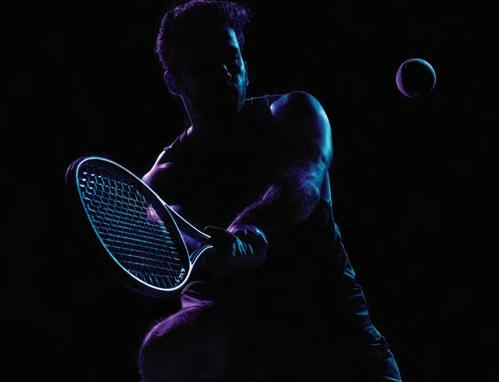
Sometimeswhen tennis coaches talk too long they sound like Charlie Brown’s teacher. Of course I’m probably guilty of this at times also but to drive home my point, I’ll find myself using these tidbits.
1.You are in battle and your forehand is the sword and your backhand is the shield. Like some of the other phrases, I didn’t invent this one. Generally at the higher levels players tend to try and attack with the forehand and defend with the backhand with the intention of defending well enough to get a chance to attack with the forehand.
2.Your left arm is looking like a lizard’s tongue. This is for a righty with their nonhitting hand on the forehand when they quickly put their left arm out during preparation and just as quickly bring it back in. Not what one wants to do. Of course, I need to have the type of relationship with the student where I can be so direct and they think it’s funny/relatable.
3.Everyone is a duck. I wrote an article on this previously. This basically means don’t get emotionally attached to your opponents attitude, demeanor and game. Everyone you play brings different things to the table and you should keep it about you and what you need to do to play this duck.
By Ricky Becker

4.Pretend you are a revolving door. I like this analogy in relation to hip rotation through ground strokes. If the middle of a revolving door was locked it wouldn’t turn while the ends of the door are stationary and the door moves fine. While the legs, hips and core help generate more power, I like using this example for the hips and especially the core.
5.What’s the difference between a tennis player and someone who plays tennis? Your answer is the split step! Pretty self-explanatory and something I think is important for any child looking to impress their school coach.
6.Bend-and-extend. This expression definitely predates me but this is where so much of the power comes from. I remember coaches tell me to bend my knees. They never told me to extend them. Did they not know? Did I do it? Who knows but so much of the power on shots comes from bending and extending the knees and/or elbows.
7.Think of your legs as a cell phone battery on your groundstrokes. See number 6. The bent knees at the lowest point is a fully-charged cell phone battery not used yet but ready. Extended legs is when the battery is at 0%. The
important part is what happens in between.
8.Hit it to the moon. I like using this when somebody is pushed deep behind the baseline, they need to hit a highdefensive shot and it will be impossible for them to get enough power to hit it over the opponent’s baseline.
9. The slice brings you closer to a 50 percent chance of winning the point so don’t use it when you are controlling the point and try to use it when you fall behind. This isn’t an absolute truth but I think it does hold a majority of the time.
10.You’re playing a pusher. We know it’s going to be frustrating. Go behind the club before your match and throw your racquets in advance. This tongue-and-cheek suggestion is intended to prepare my student for the frustrating points that a pusher often wins because once the match starts you’ve got to keep your cool and forge ahead. Don’t get caught being surprised! Don’t fall victim to the pressure of the rally. At the end of the day, 95% of matches outside the pro level are won by the person who makes less errors. Yes, part of the goal is to force your opponent into errors but if you are losing the rally rather than “check out” and go for a low
percentage shot because you feel like you are about to lose the point, get the ball back in play and make them execute the last 20% of the point themselves.
11.I didn’t love that. Actually I am being nice. I hated it.
12.Let’s see the helicopter arms. This refers to the arms being linked and in sync on the forehand. This refers to the arms tearing through the air to get power like propellers of a helicopter.
13.Walk through the door to enter the point. Too many times at the lower levels players march horizontally through the court and turn around to either serve or return. When is the last time you’ve seen a professional player do this? Always walk to the baseline
while facing your opponent’s side of the court to mentally not rush and get ready for the next point.
14.Respect everyone. Fear no one. I credit my college coach Dick Gould for this one. I still remember him telling us that San Jose State recently lost a 6-1 match to UCLA and since we (Stanford) lost to UCLA two years earlier we better respect San Jose State that afternoon. Fear no one is selfexplanatory. No matter who you are playing, you deserve to be on that court as much as they are!
15.Hover! “No Mans Land” isn’t always bad. Sometimes one might hit a shot from inside the court which is not good enough to approach the net on but is offensive enough that it’s not a good idea to retreat to the baseline. This is when you wait in No Mans Land to take advantage
of another short ball or come in and pick off a floating volley.
16.Would you throw a ball farther if you were in the shallow end of a pool or the deep end where you have to tread water? The answer is you would throw further from the shallow end but you would have to work harder to throw it far from the shallow end. The reason this is significant is that it exhibits how the ground gives you more power when you use it correctly than swinging your arms independent of the body ever can.
17.Forward, back, hip, lift! If you guessed these are quick cues for weight transfer on the serve…you are correct. This is short for rock forward, rock back, rock forward leading with your hip
continued on page 54



and using your hip to lift up your body to extend up to the serve.
18.Play “plus one” tennis. Simply put, hit every shot like you intend on hitting another shot, rather than taking a risk going for an outright winner unnecessarily. It’s like going for the two-putt in golf. This strategy is not for pure shot makers but is good if you do not miss much, you are trying to physically wear down your opponent and feel confident that you can win as long as you don’t beat yourself.
19.Ole! Meant to mimic a bullfighter when a player pulls their head or body up from a short hop too quickly like a matador does with his cape.
20.Get your work boots on this is a blue collar shot. Short hops, half-volleys, fast shots while you are at the net. Shots that you don’t want to hear an “ole” because you’ve got to be tough, physical and stay in the shot. Get low, get your head down and be tough! These shots are the ones that would most likely elicit an “ole!”
21.Take away time. Of course you can’t really take away time but when your opponent is off the

court it is more advantageous to hit your next shot earlier either on the rise or inside the court so you take away their chance (or time) to get back into the middle of the court. When your opponent is in the middle of the court it’s not as necessary to take their time away because they are presumably ready for the next shot. This also applies to someone who has a very long backswing. If you can hit with pace it will take away time for them to execute this big backswing and often force errors.
Ricky Becker is The Director of Tennis at Glen Oaks Club. Ricky also coaches highperformance juniors throughout the year and has been the Director of Tennis at three of Long Island’s biggest junior programs. As a player, Becker was the Most Valuable Player for the 1996 NCAA Championship Stanford Tennis team and ranked in the top-five nationally as a junior. He is also the 2024-25 Fantasy Hockey League Champion among tennis Insiders. He can be reached at rbecker06@yahoo.com.





Withtwenty Grand Slam titles and a career that defined elegance and longevity, Roger Federer is widely considered the greatest tennis player of all time—not just for his results, but also for his approach to the game. His skill, curiosity, and balance have set him apart for over two decades.
The Fence, the Fun, and the Foundations: Deliberate Play
Imagine a young Roger Federer on a clay court in Basel, smiling as he tries to hit the ball through the fence—not because anyone told him to, but because he was simply curious. That curiosity would eventually lead him to a career that redefined tennis and reshaped how we think about mastery.
"When I was young, I would spend hours on court just hitting with friends, trying shots between the legs, trying to hit the ball through the fence. It was fun—but I was learning."
—Roger Federer
That's the heart of deliberate play—a concept often overlooked in the push for perfection. While it may sound like an afterthought, deliberate play is essential for athletes to tap into their unrealized potential while still developing the skills that lead to continued development.
We're constantly told that the path to mastery requires hours of monotonous practice. We've all heard the phrase "put in the hours," with the assumption that more repetition leads to better results. But is it really that simple?
No one is born with the innate ability
By Eldad Campbell
to win twenty Grand Slams, seven Formula 1 titles, or six NBA championships. These achievements come from years of dedication, focus, and, yes, a lot of practice. But it's not just about how much time you spend— it's about how you spend that time.
"I didn't improve until I started practicing like I was already a professional. That meant focus, discipline, and doing the same shot hundreds of times—not for perfection, but for trust."
—Roger Federer
Deliberate practice is about purpose. It's not just repetition for the sake of repetition, but intentional work designed to push you past your current abilities. It's structured, focused, and essential for growth.
While deliberate practice is vital for mastery, there's a fine line between hard work and mental exhaustion. Young athletes, in particular, are at risk of physical and emotional strain. Push too hard and too often, and the body and mind can start to break down.
Burnout, defined as emotional exhaustion from overloading the body and mind, is a common consequence of unrelenting practice. But there's another danger: boreout, a psychological state stemming from prolonged understimulation and lack of meaningful engagement, leading to feelings of boredom, decreased motivation, and a diminished sense of joy.
“I’ve always tried to remind myself to enjoy the game. The repetition is important, but it has to be about
improving and having fun. If it becomes too much of a grind, it can become difficult to stay motivated.”

—Roger Federer
So, should athletes abandon deliberate practice?
Absolutely not.
The key is balance. While deliberate practice is essential for growth, it must be tempered by joy. Without enjoyment, practice can become a grueling chore that drains the passion from the game.
The solution isn't to cut back on practice, but to practice with the right mindset. Athletes should train not because they have to, but because they want to. This is what psychologists call harmonious passion—the joy of the process rather than the pressure to achieve a specific outcome.
When you practice passionately, you move beyond the "I should be practicing" mentality and embrace the "I want to improve" mindset. This shift opens the door to flow, a state of complete absorption where practice becomes less about working hard and more about the joy of the journey.
Incorporating play into practice is one way to maintain that joy. It helps athletes stay connected to the fun of the game while still working toward mastery.
“Sometimes the best training is when you don’t even realize you’re training. You’re just out there trying new things, competing with friends, having fun.”
—Roger Federer
continued from page 55
How do we achieve this balance? The answer lies in integrating deliberate play into structured practice. Deliberate play isn't about abandoning discipline—it's about enhancing it. By breaking down complex skills into smaller, fun challenges, athletes can engage their game-ready mentality and keep the process enjoyable.
In tennis, for example, deliberate play could involve setting a challenge like hitting ten consecutive serves in a specific target zone. The goal isn't about the score; it's about tracking progress in a fun, engaging way. It's structured, but it's also flexible.
This approach might sound gimmicky, but it's not. It's about redesigning the task to make practice motivating and
developmental, blending skill-building with creativity.
“I spent countless hours practicing, but I was never rigid. I liked experimenting with my shots, seeing what worked and what didn’t. That helped me stay inspired.”
—Roger Federer
By introducing a playful element into deliberate practice, athletes stay engaged without feeling overwhelmed or trapped by the routine.
Mastery doesn't come from working

harder—it comes from working smarter, with a balance of structured practice and unstructured play.
“I always believed that if you practice with purpose and enjoy the process, the results will come. It’s not just about working harder—it’s about working the right way.”
—Roger Federer

Like Federer, the best athletes don't just survive the practice sessions—they thrive in them. Not because they chased perfection but, because they played their way into mastery.
Eldad Campbell is a teaching professional at Robbie Wagner’s Tournament Training Center. He is a four-time representative of the Jamaican Men’s Davis Cup, Junior Davis Cup, World Youth Cup, and Pan American Games teams, and a former No. 1 junior tennis player in Jamaica. He provides counsel to high-performance tennis players, parents, and coaches, offering strategic guidance through the multifaceted landscape of the tennis industry. He can be reached via email at connect@eldadcampbell.com.

By Chris Lewit
Sportsspecialization is defined as intense, year-round training in a single sport to the exclusion of others, often starting in childhood. This approach, increasingly common among aspiring elite athletes— especially in sports like gymnastics, tennis, and figure skating—aims to develop expertise early. However, research shows that early specialization is linked with an increased risk of physical injuries, psychological stress, and burnout.
A study of athletes ages 7-18 years old by Jayanthi et al. (2013) found that young athletes who specialized early were more likely to suffer overuse injuries compared to those who participated in multiple sports. Young athletes who engaged in more hours of sports per week than their age in years or had a ratio of organized sports to free play time greater than 2:1 hours/week, were found to have higher odds of experiencing a serious overuse injury. Similarly, Bell et al. (2016) found that highly specialized youth athletes (1318 years old) were at greater risk of sustaining knee and hip overuse injuries compared to their peers. The physical cost of repetitive motion, combined with a lack of varied neuromuscular development, appears to be a driving factor.
In an expert round table “think tank,” Laprade and colleagues (2016) highlighted a consensus statement by the International Olympic Committee (IOC) that noted several physical and mental health issues related to youth athletic development, such as inadequate sleep, higher rates of overuse injuries, overtraining, burnout, and eating disorders. The IOC advises promoting participation in a variety of activities to help children develop a
broad skill set, emphasizing the importance of avoiding early specialization until at least puberty. Additionally, the IOC recommends integrating strength and neuromuscular fitness training while focusing on nurturing the overall development of the athlete, including competence, confidence, connection, and character.
Certain sports—such as tennis, gymnastics, and figure skating—tend to reward early skill development and peak performance in adolescence, particularly for female athletes. Jennifer Capriati’s case is cautionary: she turned professional at 13 and achieved rapid success but later experienced emotional and legal troubles tied in part to burnout and the pressures of early fame. Her trajectory underscores the psychological and developmental risks of early immersion in high-stakes competition.
Coco Gauff is a more contemporary example of early specialization. She began playing tennis seriously by age eight and was competing in international tournaments in her early teens. Though she did specialize early, her parents implemented a thoughtful approach that prioritized education, emotional maturity, and a strong support network. Her case highlights that while early specialization can carry risks, it may be manageable with proper oversight, high-quality coaching, and attention to mental health.
Jannik Sinner, the Italian tennis star, presents a contrasting model. He was a competitive skier until age 12 and did not fully commit to tennis until his early teens. Despite this somewhat later specialization, Sinner ascended
rapidly through the professional ranks, demonstrating that early multisport participation does not hinder elite development—and may even enhance it. His journey supports the growing body of evidence suggesting that delaying specialization can promote physical literacy, reduce injury risk, and foster long-term athletic development (Bell et al., 2016; Jayanthi et al., 2013; LaPrade et al., 2016).
However, it is essential to note that playing multiple sports is not a guarantee of developing physical literacy, which involves the ability to move with competence and confidence across a wide range of physical activities. Laprade and colleagues (2016) observed that multisport play could paradoxically increase the risk of injury if the sports have overlapping movements or increase the weekly workload too much for the athlete. Similarly, early specialization does not necessarily preclude physical literacy. With careful, well-rounded training programs, young athletes can develop diverse motor skills even within a single sport. What matters most is the quality, variability, and balance of training, not merely the number of sports played (Laprade et al., 2016).
A survey of the recent literature reveals that various studies have provided different guidelines for healthy childhood participation in sports. Côté and colleagues (2009) note seven important postulates that have been the foundation for recent research into early sport specialization: Postulate 1 is that diversification does not prevent athletes from reaching elite levels in
continued on page 58

many sports, especially where peak performance typically occurs after maturation. Postulate 2 states that engaging in early diversification is associated with longer athletic careers and positively impacts long-term involvement in sports, reducing the risk of burnout. Postulate 3 argues that early diversification provides opportunities to participate in various contexts, which most effectively contributes to positive and healthy youth development.
Postulate 4 promotes a high amount of deliberate play during the sampling phase (early sports years), which can foster intrinsic motivation by engaging children in enjoyable activities that promote self-regulation.
Postulate 5 states that deliberate play during the sampling years helps children gain a wide range of motor
and cognitive skills, which can later benefit their main sport of interest.
Postulate 6 suggests that near the end of primary school (around age 13) is an appropriate time for children to specialize in their preferred sport or continue with recreational participation.
Postulate 7 suggests that late adolescents (around age 16) have developed the necessary physical, cognitive, social, emotional, and motor skills to commit to highly specialized training in one sport.
To help protect young athletes, the American Academy of Pediatrics (2000) and other sports medicine experts offer the following guidelines:
1. Delay specialization until at least age 15–16.
2. Limit weekly training hours to the athlete’s age.

3. Ensure at least one day off per week from organized sports.
4. Include 2–3 months off from the primary sport per year in blocks of at least one month.
5. Promote diversified movement training—whether through multiple sports or varied physical activity within one sport.
Guettler and Chrumka (2024) recommend the following four strategies for clinicians, coaches, and parents:
1. Encourage Diversification in Youth Sports: Promoting the participation of young athletes in a variety of sports is essential for developing well-rounded motor skills. Early specialization in a single sport can impede broader motor skill development and increase the risk

FULL-TIME ACADEMY FOR HOMESCHOOL PLAYERS
WEEKEND HIGH
PERFORMANCE ACADEMY TRAINING FOR ALL LEVELS
HIGH PERFORMANCE SUMMER CAMP IN VERMONT
TRAIN WITH THE BEST— CHRIS HAS RECENTLY COACHED SEVERAL #1 PLAYERS IN THE US!
of injuries. By engaging in multiple sports, athletes can develop a wider skill set, which is crucial for peak performance and injury prevention in their future careers.
2. Implement Integrative Neuromuscular Training Programs: For athletes who choose early sport specialization, incorporating integrative neuromuscular training (INT) can be beneficial. INT programs combine general and sport-specific conditioning to improve musculoskeletal health, fitness, and neurocognitive processes. This holistic approach helps build coordination and motor skills, which can offset the risks associated with early specialization.
3. Establish Training Guidelines to Prevent Overuse Injuries and Burnout: To prevent overuse injuries and burnout, it is important to establish both sport-specific and general training guidelines. Limiting the hours of organized sport to no more than the athlete's age each week is one example of a strategy to reduce injury risks. Age-based eligibility rules in sports like the Women’s Tennis Association and pitch count restrictions in youth baseball have proven successful in minimizing injury risks and promoting longterm athletic careers.
4. Emphasize Fun: Ensuring that sports remain enjoyable is crucial for maintaining long-term participation. Internal motivation, driven by enjoyment and personal satisfaction, is a key factor in sustained involvement. While competition and the pursuit of winning are important, fostering an environment focused on enjoyment can lead to more consistent engagement and, ultimately, greater success in sports.
A Balanced Perspective
While the risks of early specialization
are well-documented, a one-size-fits-all approach is not appropriate. Certain sports demand early training to remain competitive, particularly for female athletes. The goal should not be to avoid specialization entirely but to individualize it—carefully monitoring physical workloads, psychological health, and long-term development. If an athlete is specializing early, the inclusion of INT and injury prevention protocols can help reduce the risk of injury and develop broad motor skills and coordination (Guettler & Chrumka (2024). With thoughtful planning, strong adult support systems, and evidence-based guidelines, it is possible to balance competitive goals with the health and well-being of young athletes.
• American Academy of Pediatrics. (2000). Intensive training and sports specialization in young athletes. Pediatrics, 106(1), 154–157.

• Bell, D. R., Post, E. G., Trigsted, S. M., Schaefer, D. A., McGuine, T. A., & Brooks, M. A. (2016). Prevalence of sport specialization in high school athletics: A 1-year observational study. The American Journal of Sports Medicine, 44(6), 1469–1474.
• Côté, J., Lidor, R., & Hackfort, D. (2009).To sample or to specialize? ISSP position stand: Seven postulates about youth sport activities that lead to continued participation and elite performance. International Journal of Sport and Exercise Psychology, 9, 7-17.
• Guettler, J. H., & Chrumka, A. (2024). The fallacy of falling behind: The realities of early sports specialization. Sports Medicine Update, Fall 2024.
• Jayanthi, N. A., LaBella, C. R., Fischer, D., Pasulka, J., & Dugas, L. R. (2013). Sportsspecialized intensive training and the risk of injury in young athletes: A clinical case-control study. The American Journal of Sports Medicine, 43(4), 794–801.
• LaPrade, R. F., Agel, J., Baker, J., Brenner, J. S., Cordasco, F. A., Côté, J., Engebretsen, L., Feeley, B. T., Gould, D., Hainline, B., Hewett, T., Jayanthi, N., Kocher, M. S., Myer, G. D., Nissen, C. W., Philippon, M. J., & Provencher, M. T. (2016). AOSSM early sport specialization consensus statement. Orthopaedic Journal of Sports Medicine, 4(4), 2325967116644241.

Chris Lewit is a leading high-performance coach, author, and educator. He is the author of the The Secrets of Spanish Tennis, Secrets of Spanish Tennis Second Edition and a new technique book, Winning Pretty. He studied literature at Cornell, Harvard, and Columbia, and is currently pursuing a PhD in kinesiology. Chris Lewit played No. 1 for Cornell University and competed on the USTA and ITF pro circuits, and as a coach, he has worked with several No. 1 junior players and has trained hundreds of nationally ranked juniors. He directs a full-time academy for homeschool/online players and a high performance summer camp at his club in the beautiful green mountains of Manchester, Vermont. Contact Chris directly by phone/WhatsApp 914-462-2912 or chris@chrislewit.com.







With spring having arrived, it’s time for the clay court season on the ATP and WTA Tours. This time of year is highlighted by the signature red clay of Roland Garros and the year’s second major: the French Open.
A year ago, the tournament was won by two of the sport’s biggest stars. Carlos Alcaraz won the French Open for the first time in his career, reigning supreme on the clay surface he grew up watching his idol Rafael Nadal dominate for so many years.
On the women’s side, Iga Swiatek continued her Parisian dominance, winning her third straight French Open title, and the fourth of her career.
“I love this place, I wait every year to come back here,” Swiatek proclaimed.
As we head into the 2025 installment of the French Open, will we see new champions, or will Alcaraz and Swiatek continue their dominance at Roland Garros? How will the crowd respond to the return of world number one Jannik Sinner? These are just some of the questions ahead of Roland Garros.
Long Island Tennis Magazine breaks down some of the players to watch out for in Paris in 2025, including Contenders, Pretenders and Sleepers.
Carlos Alcaraz
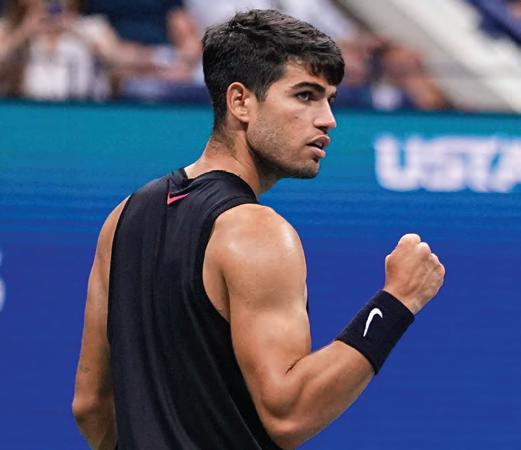
When evaluating the contenders for this year’s French Open men’s singles title, there is no better person to start
with than the event’s defending champion. A year ago, Carlos Alcaraz captured the fourth major title of his career but his first at the French Open, the surface where many people believed he would have the most success in his career, much like his idol and compatriot Rafael Nadal. Alcaraz has played well during the claycourt swing in 2025, including winning the Monte Carlo title for the first time in his career, and reaching the final in Barcelona, setting himself up for continued success on the Roland Garros clay.
Alexander Zverev
Always a bridesmaid, never a bride. That is seemingly the case with Alexander Zverev who has reached the finals of three majors yet has never been able to win one. He hopes that changes in Paris this year, as he continues to play some of the best tennis of his career, and with the knowledge that he has reached the finals at the French Open before, which was last year. He won the Munich title in April, the clay court event in his native Germany, and with experience playing late into major finals, and a strong desire to finally win one, Zverev is one of the favorites to win this year’s French Open.
Alex de Minaur
Alex de Minaur has been a staple of the Top 10 of the ATP Tour Rankings for some time now, and he remains one of the more consistent players on tour. During that time, he has reached the quarterfinals of majors five times, once at each of the four majors including twice at the U.S. Open. A year ago, the Australian was in the final eight at the French Open before losing to finalist Alexander Zverev. This time around, De Minaur could go deeper than that. He has played well on clay this spring including reaching the semifinals in Monte Carlo and the quarterfinals in Barcelona. While he has never reached the finals at a clay court event, De Minaur has what it takes to make a deep run at the sport’s biggest events. Having watched him play well through the first quarter of the season, De Minaur passes the eye test and this could be his breakout major.
Taylor Fritz
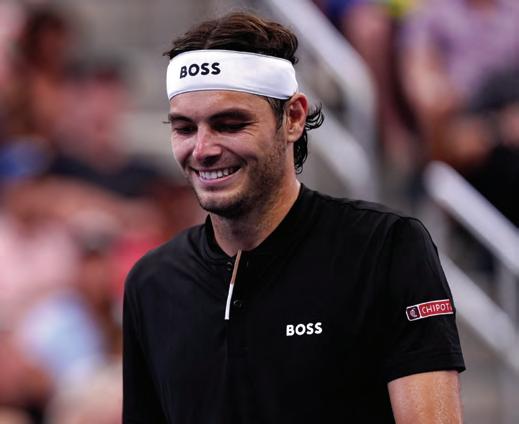
The top-ranked American has surely established himself as one of the best players in the world, but Taylor Fritz has yet to prove he can make headway at the French Open. That could primarily be because of his lack of success on clay overall. Fritz has only been to one clay court final in his career, which he lost, and in general, the American men tend to struggle on clay, especially when compared to their success on hard court. His best showing at the French Open was a fourth-round result in 2024, but that could be the extent of Fritz’s potential at Roland Garros.


Daniil Medvedev
Daniil Medvedev has always been upfront about his displeasure for the clay surfaces, and that has been borne out with the French Open serving as the major where he has enjoyed the least success throughout his career. He has made one quarterfinal at Roland Garros, four years ago, and other than that has seen his Parisian runs end early on in the opening week of the tournament. Medvedev hits a flat ball which has never served him well on clay, and his past indicates that is something that will go unchanged.
Andrey Rublev
Despite being a mainstay in the Top 10 of the rankings, the quarterfinals is as far as Andrey Rublev has advanced at the Grand Slams. He has reached that stage 10 different times in his career and is 0-10 in those matches. It seems to be a massive hurdle for the Russian as he attempts to win his first ever major, and one has to think there is something mental associated with that. He reached the quarterfinals at the French Open in 2020 and 2022, and we shouldn’t expect a deeper run that that this time around.
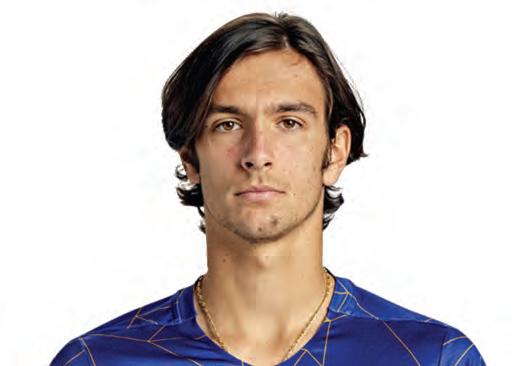
This season has proven to be the best yet in the young career of Lorenzo Musetti, with the Italian reaching a career-high ranking of 11th in the world. With Musetti playing at the top of his game, he could be due for a deep run at the French Open. He made a name for himself by reaching the Wimbledon semifinals in 2024, proving that he has to what to takes to go far at a major, and has played well on clay thus far in 2025. He reached the first Masters 1000 final of his career in Monte Carlo, and had he not been injured in the final against Carlos Alcaraz, could have been the one holding the trophy.
Holger Rune
Talent has never been the question for Holger Rune, but the debate has always been whether or not he has what it takes between the ears to make the kind of run at a Grand Slam that people projected for him when he broke onto the tour as a teenager. Still just 21-years-old, it seems as if Rune has begun to come into his own this spring. He reached the finals of the BNP Paribas Open at Indian Wells, which was a big stepping stone for him, and backed that up when the clay court swing began, defeating Carlos Alcaraz to win the Barcelona title, his first ATP 500 crown. As a result, Rune jumped back into the Top 10. With a new found confidence and the results to back it up, he could be due for a deep run.
Joao Fonseca
A player that pops off the screen when watching on tv is a little-known Brazilian named Joao Fonseca. At just 18-yearsold, Fonseca hasn’t had a lot of time to make his name known at the majors but that could soon change. He qualified for the Next Generation finals in 2024 and despite being the youngest player in the field, captured the title. As a South American, Fonseca grew up playing and training on clay, and thrives on that surface. The lone final he reached at the ATP Tour level was at the Argentina Open, played on clay. Despite being ranked outside the Top 60, Fonseca is one to watch for in Paris.

No woman in the history of the tour has won four straight French Open titles, so Iga Swiatek will be out to make history when she arrives at Roland Garros. There have
been several women to win three in a row, which Swiatek has done, but no one has ever won four straight. However, Swiatek has what it takes to be the first. She has dominated the French Open winning four titles overall in Paris and losing just two matches there in her entire career. She is clearly the player to beat on the women’s side.
Coco Gauff
Coco Gauff has won a major title, which came at the U.S. Open in 2023, and has her sights set on adding a second of those trophies to her collection. Gauff has been open about her favorite surface being the hard court, but she has proven she can be successful on clay. She reached the French Open final in 2022, and has won 72 percent of the matches she played on clay during her career. As she continues to sure up her forehand and her serve, Gauff is rounding out her game to become a complete player, one that can produce a French Open championship.
Mirra Andreeva
A year ago, Mirra Andreeva was one of the last four players standing at the French Open. At just 17-yearsold, it was the best result of her young career, and a sign of things to come. Andreeva has had a great start to 2025 which included reaching the semifinals in Dubai and capturing the biggest title of her career at the BNP Paribas Open in Indian Wells. The results showed that Andreeva was not just a talent, but someone who has what it takes to make a deep run at the sport’s biggest tournaments. She will turn 18 just before this year’s French Open, and after reaching the semifinals there in 2024, is set to make another push for her first Grand Slam.
Aryna Sabalenka

It’s hard to consider the top-ranked woman in the world as a pretender, but that is just how unique the French Open is. Playing on clay changes up a player’s attack style and requires some different skill sets that don’t always apply to the hard courts, which is where Sabalenka could find some trouble. She is perhaps the biggest hitter on tour and a proven champion, but Sabalenka has had little of her success come in Paris. She made the semifinals at Roland Garros in 2023, but outside of that and a quarterfinal run in 2024, she has never been out of the third round.


Madison Keys
The American reached the pinnacle of her career earlier this year, winning “Down Under” and hoisting the Australian Open trophy. Keys became one of the oldest first-time champions in women’s history, and it was a seminal moment for one of the sport’s most likeable figures. But it may be hard for her to repeat that success in Paris this spring. Keys, the fifth-ranked player in the world, has never been a great player on clay with her game translating better to the other surfaces, and that is evidenced by her lack of success during her French Open career. The last five seasons, she has failed to advance past the tournament’s opening week, something I would expect to continue this year.
Qinwen Zheng
Much like Sabalenka and Keys, Qinwen Zheng is a power player who has the tools to dominate on the hard courts, but tends to not translate to clay. While she did win the Paris Olympics Gold Medal on the same courts where the French Open is played, Zheng hasn’t produced the same results at the French Open that she has at the other majors. Her best result was a fourth round exit back in 2022
Jelena Ostapenko
It seems like a lifetime ago, but Jelena Ostapenko is a former French Open Champion. All the way back in 2017, the Latvian teenager shocked a lot of people when she entered the tournament ranked 47th and became the tournament’s first unseeded woman champion since 1933. Now nearly 10 years later, Ostapenko has had an up and down career, but
still has the requisite tools to win a major title. She is playing good tennis in 2025, beating the likes of Aryna Sabalenka and Iga Swiatek en route to winning the title in Stuttgart, and prior to that reached the finals in Doha. That Stuttgart title was pivotal, as she beat the top two players in the world on clay, the perfect preparation for a French Open run.
Alexandra Eala

A player that has caught the attention of the tennis world in 2025 is young Filipina Alexandra Eala, who is already the highest ranked player in her nation’s history, but has much higher goals for her career. A U.S. Open girls singles champion in 2022, Eala has never played in the main draw at a major, but will certainly be in the French Open field based on her success in the early part of the year. She is ranked 72nd in the world and has scored wins over Iga Swiatek, Paula Badosa, Madison Keys and Jelena Ostapenko, so don’t be surprised to see Eala make a run in Paris.
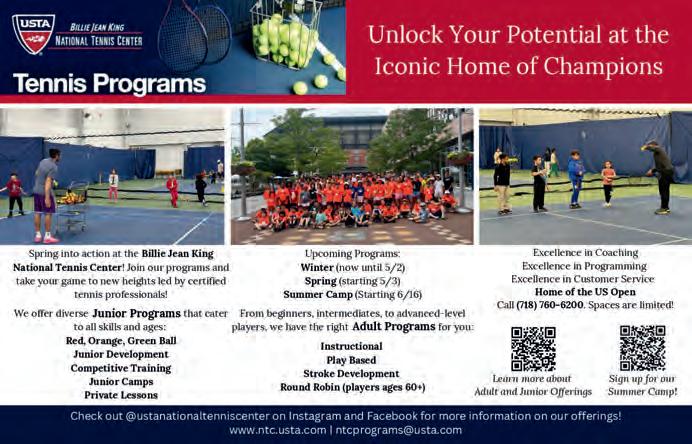
There was a time when Sofia Kenin was the future of American tennis on the women’s side. As a teenager back in 2020, Kenin won the Australian Open and then reached the finals of the French Open, but in the years since, injuries and a hiatus from tennis action saw her fall off the tennis radar. But Kenin is back competing at a high level and is approaching moving into the Top 30 again. She has always been an effective clay court player, and this spring reached the finals of the Charleston Open, a clay court event. With her experience at the French Open and a return to her past form, Kenin could be out to surprise some people in Paris.

